At its core, the Institute for the Science of Origins consists of more than a hundred fellows whose labs, research, and intellectual foci cross disciplinary boundaries in their pursuit of Origins Science questions. As ISO fellows, they advance the mission of the ISO to initiate scientific research on, educate students about, and increases public understanding of the origin and evolution of systems, simple and complex, natural and human, and the applications of that knowledge.
ISO takes great pride in the diversity of positions held by ISO fellows, ranging from Case Western Reserve University faculty members to Cleveland Museum of Natural History curators, to COO of the Cleveland public broadcasting consortium, Ideastream, and beyond, to other institutions, domestic and international.
Origins Fellows
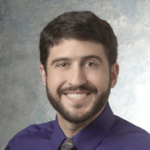 Eben Alsberg is Professor in the Departments of Biomedical Engineering and Orthopaedic Surgery at Case Western Reserve University. His laboratory focuses on engineering functional biologic replacements to repair damaged or diseased tissues in the body. They use the complex signals that are implicated in tissue morphogenesis, repair, and homeostasis as a template for the development of innovative biomaterials for tissue regeneration. Through the precise temporal and spatial presentation of soluble bioactive factors, mechanical forces, and biomaterial physical and biochemical properties, the Alsberg lab aspires to create microenvironments that regulate cell gene expression and new tissue formation. Some areas of active investigation include controlling stem cell differentiation, delivering bioactive factors sequentially, developing spatially patterned constructs, understanding cell-cell interactions, and determining mechanical influences on cell function. Learn more at http://engineering.case.edu/ebme/alsberg.
Eben Alsberg is Professor in the Departments of Biomedical Engineering and Orthopaedic Surgery at Case Western Reserve University. His laboratory focuses on engineering functional biologic replacements to repair damaged or diseased tissues in the body. They use the complex signals that are implicated in tissue morphogenesis, repair, and homeostasis as a template for the development of innovative biomaterials for tissue regeneration. Through the precise temporal and spatial presentation of soluble bioactive factors, mechanical forces, and biomaterial physical and biochemical properties, the Alsberg lab aspires to create microenvironments that regulate cell gene expression and new tissue formation. Some areas of active investigation include controlling stem cell differentiation, delivering bioactive factors sequentially, developing spatially patterned constructs, understanding cell-cell interactions, and determining mechanical influences on cell function. Learn more at http://engineering.case.edu/ebme/alsberg.
 Eileen Anderson-Fye is Associate Professor of Bioethics; Adjunct Associate Professor of Psychiatry; Director, Medicine, Society, and Culture at Case Western Reserve University. Drawn to interdisciplinary study since her own days as an undergraduate, Dr. Anderson-Fye developed the MSC degree track for students to explore how factors beyond biomedical science contribute to health and wellness. Social and cultural constructs, historical and rhetorical influences, literature, philosophy – all shape perceptions of health, illness, and recovery, which in turn affect choices, beliefs, and behaviors. Those who appreciate this complex and multi-layered interplay will be able to play pivotal roles in enhancing how care is delivered – and the outcomes it yields. Her most enduring project is an ongoing longitudinal study of how subjective perceptions of current and future well-being allowed the first mass-educated cohort of Belizean schoolgirls to overcome severe threats to their mental and physical health. Learn more at her webstie, https://case.edu/medicine/bioethics/about/faculty–staff/anderson-fye.html.
Eileen Anderson-Fye is Associate Professor of Bioethics; Adjunct Associate Professor of Psychiatry; Director, Medicine, Society, and Culture at Case Western Reserve University. Drawn to interdisciplinary study since her own days as an undergraduate, Dr. Anderson-Fye developed the MSC degree track for students to explore how factors beyond biomedical science contribute to health and wellness. Social and cultural constructs, historical and rhetorical influences, literature, philosophy – all shape perceptions of health, illness, and recovery, which in turn affect choices, beliefs, and behaviors. Those who appreciate this complex and multi-layered interplay will be able to play pivotal roles in enhancing how care is delivered – and the outcomes it yields. Her most enduring project is an ongoing longitudinal study of how subjective perceptions of current and future well-being allowed the first mass-educated cohort of Belizean schoolgirls to overcome severe threats to their mental and physical health. Learn more at her webstie, https://case.edu/medicine/bioethics/about/faculty–staff/anderson-fye.html.
Bud Baeslack is the Chief Academic Officer of Case Western Reserve University. Prior to joining CWRU, Baeslack served as the Dean of the College of Engineering and Executive Dean of the Professional Colleges at The Ohio State University. Baeslack is internationally recognized for his research on the materials science and engineering aspects of joining advanced aerospace materials, including titanium, aluminum and nickel-base alloys, intermetallics and metal-matrix composites. He has received research funding from the Office of Naval Research, the Army Research Office, the Air Force Office of Scientific Research, the National Science Foundation, the Ohio Edison Program, national laboratories and industry. Baeslack and his students have authored over one hundred and fifty journal and proceedings articles. He has been elected a Fellow of ASM International, The Welding Institute and the American Welding Society. Baeslack received his B.S. and M.S. degrees in Welding Engineering from The Ohio State University and his Ph.D. degree in Materials Engineering from Rensselaer Polytechnic Institute. Following graduation from RPI, he served four years at the U.S. Air Force Materials Laboratory as a materials engineer and technical area manager. Learn more at https://case.edu/provost/about/bio/.
 Alethea Barbaro is Assistant Professor in Department of Mathematics, Applied Mathematics and Statistics at Case Western Reserve University. Her research focuses on mathematical models, generally of social organisms, from the perspective of kinetic theory. At the discrete level, she designs and implements interacting particle and agent-based models; thus far, she has created models of fish migration, human gang rivalries and gang territorial development, and she is now also developing models in the context of medicine. She is interested in the kinetic and hydrodynamic limits of these models, especially in models that undergo phase transitions as one or more of the parameters is varied. She studies these phase transitions at the microscopic, mesoscopic, and macroscopic scales. Learn more at her website, http://casfaculty.case.edu/alethea-barbaro/.
Alethea Barbaro is Assistant Professor in Department of Mathematics, Applied Mathematics and Statistics at Case Western Reserve University. Her research focuses on mathematical models, generally of social organisms, from the perspective of kinetic theory. At the discrete level, she designs and implements interacting particle and agent-based models; thus far, she has created models of fish migration, human gang rivalries and gang territorial development, and she is now also developing models in the context of medicine. She is interested in the kinetic and hydrodynamic limits of these models, especially in models that undergo phase transitions as one or more of the parameters is varied. She studies these phase transitions at the microscopic, mesoscopic, and macroscopic scales. Learn more at her website, http://casfaculty.case.edu/alethea-barbaro/.
 Jill S. Barnholtz-Sloan is Sally S. Morley Designated Professor in Brain Tumor Research
Jill S. Barnholtz-Sloan is Sally S. Morley Designated Professor in Brain Tumor Research
Professor and Associate Director for Bioinformatics/Translational Informatics at the
Case Comprehensive Cancer Center and Institute for Computational Biology of
Case Western Reserve University School of Medicine. Dr. Jill Barnholtz-Sloan’s research focuses on genetic/molecular epidemiology of complex diseases, with a particular focus on cancer. She is multi-disciplinary trained in biostatistics, population genetics, and human genetics, and has extensive experience in multi-center cancer studies. She is Director of the Case CCC Biostatistics and Bioinformatics Core Facility where she is responsible for directing the statistical analysis of high throughput “omics” data. She has extensive experience in hypothesis development, study design and analysis for studies of various phenotypes in humans. As the Principal Investigator of the Ohio Brain Tumor Study (OBTS), Dr. Barnholtz-Sloan leads a multi-center study in Ohio to study genetic and environmental factors and their association with brain tumor clinical outcomes. Contact: 216-368-1506 (Phone) / jsb42@case.edu (Email). Learn more at http://cancer.case.edu/about/primary-faculty/jill-s-barnholtz-sloan-phd.html
 Cynthia Beall is Professor of Anthropology, Professor of Anatomy and Global Health at Case Western Reserve University. Cynthia Beall is a physical anthropologist whose research focuses on human adaptation to high-altitude hypoxia, particularly the different patterns of adaptation exhibited by Andean, Tibetan and East African highlanders. Her current research deals with the genetics of adaptive traits and evidence for natural selection, with the role of nitric oxide in oxygen delivery at high altitude and with the human ecology of high-altitude Tibetan nomads. Professor Beall is a member of the U.S. National Academy of Sciences and the American Philosophical Society .Contact: cynthia.beall@case.edu, 216.368.2277. Learn more about Cynthia Beall’s work at http://www.case.edu/artsci/anth/altitude/index.html.
Cynthia Beall is Professor of Anthropology, Professor of Anatomy and Global Health at Case Western Reserve University. Cynthia Beall is a physical anthropologist whose research focuses on human adaptation to high-altitude hypoxia, particularly the different patterns of adaptation exhibited by Andean, Tibetan and East African highlanders. Her current research deals with the genetics of adaptive traits and evidence for natural selection, with the role of nitric oxide in oxygen delivery at high altitude and with the human ecology of high-altitude Tibetan nomads. Professor Beall is a member of the U.S. National Academy of Sciences and the American Philosophical Society .Contact: cynthia.beall@case.edu, 216.368.2277. Learn more about Cynthia Beall’s work at http://www.case.edu/artsci/anth/altitude/index.html.
 Gurkan Bebek is an Instructor in the Center for Proteomics and Bioinformatics at Case Western Reserve University. His work is enabled and prompted by significant biological technological progress and the completion of many genome sequencing projects, including that of the human, that have provided a reasonably detailed view of the cell. From this new point of view, i. e. new knowledge of cellular networks, we have the means to understand the principles underlying the dynamic behavior of cells. However, this requires integration of theoretical and experimental approaches at a variety of levels. His research objective is to develop computational tools and approaches for expanding the use of biological and medical data. To accomplish this, methods as well as tools and models are needed to acquire, analyze and integrate this knowledge. By formulating new hypotheses to explain observations not predicted by these models and tools, additional analysis and experiments can be carried out. Scientists can then utilize this knowledgebase for new discoveries. Learn more at http://proteomics.case.edu/faculty/gurkan_bebek.html.
Gurkan Bebek is an Instructor in the Center for Proteomics and Bioinformatics at Case Western Reserve University. His work is enabled and prompted by significant biological technological progress and the completion of many genome sequencing projects, including that of the human, that have provided a reasonably detailed view of the cell. From this new point of view, i. e. new knowledge of cellular networks, we have the means to understand the principles underlying the dynamic behavior of cells. However, this requires integration of theoretical and experimental approaches at a variety of levels. His research objective is to develop computational tools and approaches for expanding the use of biological and medical data. To accomplish this, methods as well as tools and models are needed to acquire, analyze and integrate this knowledge. By formulating new hypotheses to explain observations not predicted by these models and tools, additional analysis and experiments can be carried out. Scientists can then utilize this knowledgebase for new discoveries. Learn more at http://proteomics.case.edu/faculty/gurkan_bebek.html.
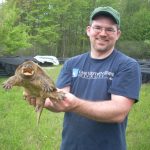 Mike Benard is George B. Mayer Assistant Professor in Urban and Environmental Studies at Case Western Reserve University. His overall goal is to determine how changing environments affect organisms’ abundances, traits and ecological interactions. Achieving this goal requires understanding how species respond to natural environmental variation, as well as understanding how they respond to human-caused disturbance such as habitat destruction and climate change. Understanding species’ responses will play a critical role in developing conservation strategies for imperiled species, and control strategies for harmful species. His main study organisms are amphibians, which are undergoing severe worldwide declines. It is important to determine why amphibians are declining and how we can stop those declines because amphibians provide important ecological services (e.g., insect control) and they can also serve as a sensitive indicator of environmental change. Contact: mfb38@case.edu 216.368.1080, Website: http://www.mister-toad.com/
Mike Benard is George B. Mayer Assistant Professor in Urban and Environmental Studies at Case Western Reserve University. His overall goal is to determine how changing environments affect organisms’ abundances, traits and ecological interactions. Achieving this goal requires understanding how species respond to natural environmental variation, as well as understanding how they respond to human-caused disturbance such as habitat destruction and climate change. Understanding species’ responses will play a critical role in developing conservation strategies for imperiled species, and control strategies for harmful species. His main study organisms are amphibians, which are undergoing severe worldwide declines. It is important to determine why amphibians are declining and how we can stop those declines because amphibians provide important ecological services (e.g., insect control) and they can also serve as a sensitive indicator of environmental change. Contact: mfb38@case.edu 216.368.1080, Website: http://www.mister-toad.com/
 Joe Bokar is Hematology/Oncology Fellowship Program Director at UH Cleveland Medical Center and Associate Professor at Case Western Reserve School of Medicine. His expertise is in Genitourinary Oncology, Esophageal Cancer, Lung Cancer, Melanoma, Head and Neck Oncology.
Joe Bokar is Hematology/Oncology Fellowship Program Director at UH Cleveland Medical Center and Associate Professor at Case Western Reserve School of Medicine. His expertise is in Genitourinary Oncology, Esophageal Cancer, Lung Cancer, Melanoma, Head and Neck Oncology.
Website: http://www.uhhospitals.org/find-a-doctor/bokar-joseph-159
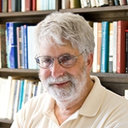 Richard Boyd
Richard Boyd
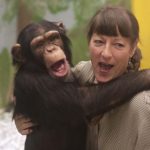 Sarah “Sally” Boysen is Professor Emeritus of Psychology at Ohio State University.
Sarah “Sally” Boysen is Professor Emeritus of Psychology at Ohio State University.
 Ronald Blanton is Professor of International Health and Epidemiology and Biostatistics at Case Western Reserve University. His work tries to integrate basic bench research with fieldwork in tropical medicine. The current active projects in the laboratory primarily utilize population genetics, quantitative genetics and molecular engineering. We study gene flow for the parasite Schistosoma mansoni and Aedes aegypti, the vector of dengue virus. From these studies we may be able to better design public health control measures for these problems. Another project is aimed at identifying genes that contribute to the clinical presentation of dengue. Finally, the lab participates in a project to clone, express and test potential vaccine candidates for S. mansoni infection. Past studies have focused on the relationship of geohelminth infections to human growth and development. For future directions, he is interested in also investigating genes that influence the response to therapy of hepatitis C (like dengue, a flavivirus). Most of this work involves a field component in Salvador, Bahia, Brazil. Website: http://www.case.edu/orgs/cghd/faculty-research/ronald-blanton.htm
Ronald Blanton is Professor of International Health and Epidemiology and Biostatistics at Case Western Reserve University. His work tries to integrate basic bench research with fieldwork in tropical medicine. The current active projects in the laboratory primarily utilize population genetics, quantitative genetics and molecular engineering. We study gene flow for the parasite Schistosoma mansoni and Aedes aegypti, the vector of dengue virus. From these studies we may be able to better design public health control measures for these problems. Another project is aimed at identifying genes that contribute to the clinical presentation of dengue. Finally, the lab participates in a project to clone, express and test potential vaccine candidates for S. mansoni infection. Past studies have focused on the relationship of geohelminth infections to human growth and development. For future directions, he is interested in also investigating genes that influence the response to therapy of hepatitis C (like dengue, a flavivirus). Most of this work involves a field component in Salvador, Bahia, Brazil. Website: http://www.case.edu/orgs/cghd/faculty-research/ronald-blanton.htm

Jürgen Bosch received his PhD in Biology at the Technical University of Munich and the Max-Planck Institute for Biochemistry. He did postdoctoral work at the Structural Genomics of Pathogenic Protozoa center at the University of Washington, Seattle before joining the faculty at Johns Hopkins University, Baltimore in 2009. He co-founded InterRayBio, a Biotech startup in 2015 and is currently a Research Scientist at Case Western Reserve University in the Division of Pediatric Pulmonology and Allergy/Immunology. His research focuses on the exploitation of protein-protein interactions utilizing a plethora of biophysical methods and applying them to various disease models including Malaria, Cancer and Cystic fibrosis. He is the author of more than 30 peer reviewed publications and has four patents. Learn more at his website, http://lupo.jhsph.edu/boschlab/Research_Interest.html.
 Jenny Brynjarsdottir is Assistant Professor in Department of Mathematics, Applied Mathematics and Statistics. Her research interests lie in Bayesian statistics Bayesian hierarchical modeling, Dimension reduction in space-time modeling, Environmental statistics, Uncertainty quantification, and Model discrepancy.
Jenny Brynjarsdottir is Assistant Professor in Department of Mathematics, Applied Mathematics and Statistics. Her research interests lie in Bayesian statistics Bayesian hierarchical modeling, Dimension reduction in space-time modeling, Environmental statistics, Uncertainty quantification, and Model discrepancy.
Website: http://math.case.edu/faculty/jenny-brynjarsdottir/
 Clemens Burda is Professor of Chemistry at Case Western Reserve University. Dr. Clemens Burda’s research centers around Nanoscience, Photoscience and Photomedicine, and he has developed an interest in pre-biotic molecular structures as they could relate to high-temperature and high-pressure aqueous conditions such as volcanic, cometary or planetary impact. His lab recently showed that even for such simple molecules as carboxylic acids and organic amines, condensation and nanostructure formation is very likely, which then can lead to the necessary compartmentalization that allows new reaction conditions under increased concentrations and thus increased reaction rates. This could lead to local self-perpetuation and compartmentalization of chemical reactions based on pre-biotic nanostructures. This may have been one of the earliest evolutionary events in prebiotic chemistry and such steps may have led to more complex organic chemistry, to biochemical molecules like amino acids and eventually to RNA and DNA. He has published over 150 articles in fields from nanoscience to laser spectroscopy. His current H-index is 60 and his research has been cited over 20000 times. His research has been funded by NSF, NIH, NASA, and the American Chemical Society. Contact: burda@case.edu 216.368.5918, Website: http://caslabs.case.edu/burda
Clemens Burda is Professor of Chemistry at Case Western Reserve University. Dr. Clemens Burda’s research centers around Nanoscience, Photoscience and Photomedicine, and he has developed an interest in pre-biotic molecular structures as they could relate to high-temperature and high-pressure aqueous conditions such as volcanic, cometary or planetary impact. His lab recently showed that even for such simple molecules as carboxylic acids and organic amines, condensation and nanostructure formation is very likely, which then can lead to the necessary compartmentalization that allows new reaction conditions under increased concentrations and thus increased reaction rates. This could lead to local self-perpetuation and compartmentalization of chemical reactions based on pre-biotic nanostructures. This may have been one of the earliest evolutionary events in prebiotic chemistry and such steps may have led to more complex organic chemistry, to biochemical molecules like amino acids and eventually to RNA and DNA. He has published over 150 articles in fields from nanoscience to laser spectroscopy. His current H-index is 60 and his research has been cited over 20000 times. His research has been funded by NSF, NIH, NASA, and the American Chemical Society. Contact: burda@case.edu 216.368.5918, Website: http://caslabs.case.edu/burda
 Nikki Burt is Curator and Head of Dep. of Human Health and Evolutionary Medicine at Cleveland Museum of Natural History. She is developing the content for the new Human Health Gallery, which examines health from an evolutionary perspective. The Department has recently started a Biorepository for hard tissue biological specimens where researcher can curate their samples. Dr. Burt is beginning a new research program on Infant Feeding Practices in Cleveland using stable isotope analysis in combination with other techniques. Recently, Dr. Burt published Origins: An Evolutionary Journey with Co-author Dr. Mindy Pitre and Illustrator Holly Hunold. Origins is an educational game that teaches the concepts of evolution and the fundamentals of human origins through classroom play. Contact: burt.nicolem@gmail.com 216.231.4600 ext. 3531
Nikki Burt is Curator and Head of Dep. of Human Health and Evolutionary Medicine at Cleveland Museum of Natural History. She is developing the content for the new Human Health Gallery, which examines health from an evolutionary perspective. The Department has recently started a Biorepository for hard tissue biological specimens where researcher can curate their samples. Dr. Burt is beginning a new research program on Infant Feeding Practices in Cleveland using stable isotope analysis in combination with other techniques. Recently, Dr. Burt published Origins: An Evolutionary Journey with Co-author Dr. Mindy Pitre and Illustrator Holly Hunold. Origins is an educational game that teaches the concepts of evolution and the fundamentals of human origins through classroom play. Contact: burt.nicolem@gmail.com 216.231.4600 ext. 3531
 Carlos Bustamonte is Professor of Chemistry, Physics and Molecular and Cell Biology and
Carlos Bustamonte is Professor of Chemistry, Physics and Molecular and Cell Biology and
The Raymond and Beverly Sackler Professor in Biophysics University of California Berkeley. His laboratory develops and applies novel methods of single-molecule manipulation and detection, such as optical tweezers, single-molecule fluorescence microscopy, and super-resolution microscopy. These techniques are used to understand DNA packaging into bacteriophage Φ29 capsids, transcription, translation and protein folding, protein degradation by ClpXP, mitochondrial fission, catalysis-enhanced enzyme diffusion. His lab is affiliated with the departments of Molecular and Cell Biology, Physics, and Chemistry as well as the Physical Biosciences Division at Lawrence Berkeley National Laboratory. Website: http://bustamante.berkeley.edu/
Daniela Calvetti is the James Wood Williamson Professor in the Department of Mathematics, Applied Mathematics and Statistics at Case Western Reserve University. She received the “laurea” in Mathematics from the University of Bologna in 1980 and the PhD in Mathematics from the University of North Carolina at Chapel Hill in 1989. Her first research activity was in the area of numerical linear algebra and orthogonal polynomials, with special attention to structured matrices and iterative methods for large-scale linear systems. As she started working on the numerical solution of discrete inverse problem, her research began including elements of Bayesian inference to account for information of qualitative type into the solution. As she became involved with modeling integrated metabolic system within the Center for Modeling Integrated Metabolic Systems, her research started to address the problem of constructing mathematical models and estimating the model parameters within a Bayesian inference framework. She is the author and coauthor of about 150 articles, and co-author, with E. Somersalo, of the books “Bayesian Scientific Computing: 10 Lectures on Subjective Computing” and “ Computational Mathematical Modeling: an Integrated Approach Across Scales”. Website: http://math.case.edu/faculty/daniela-calvetti/
 Mark Chance is Vice Dean for Research in the Case Western Reserve School of Medicine. His lab’s research is focused in structural and cellular proteomics. They use high throughput methods to identify the structure and function of large macromolecular complexes in areas relevant to iron transport, mis-match repair, and actin filament assembly. New technologies in mass spectrometry are also allowing protein expression, localization, and interactions to be studied in increasing detail and on a genome wide scale. His lab’s expertises in quantitative mass spectrometry and 2-D gel technologies are being applied to identify biomarkers and regulatory pathways in colon cancer, diabetes, radiation exposure, and HIV infection. In structural biology, the Chance lab now squares itself to the next biological hurdle: high-throughput structural biology is optimized to examine the structure of small soluble protein domains, while critical functions of biology are controlled by larger multi-protein complexes. The availability of high resolution domain structures is critical to understanding the assemblies, the domains must “dock” with each other in a functionally relevant fashion. The long term structural goals of the Chance laboratory are focused on understanding the structure and dynamics of these assemblies using biochemical approaches, mass spectrometry, crystallography, cryo-EM, cross-linking, footprinting, and molecular modeling to understand the physiologically relevant functional states. Website: http://proteomics.case.edu/faculty/mark_chance.html
Mark Chance is Vice Dean for Research in the Case Western Reserve School of Medicine. His lab’s research is focused in structural and cellular proteomics. They use high throughput methods to identify the structure and function of large macromolecular complexes in areas relevant to iron transport, mis-match repair, and actin filament assembly. New technologies in mass spectrometry are also allowing protein expression, localization, and interactions to be studied in increasing detail and on a genome wide scale. His lab’s expertises in quantitative mass spectrometry and 2-D gel technologies are being applied to identify biomarkers and regulatory pathways in colon cancer, diabetes, radiation exposure, and HIV infection. In structural biology, the Chance lab now squares itself to the next biological hurdle: high-throughput structural biology is optimized to examine the structure of small soluble protein domains, while critical functions of biology are controlled by larger multi-protein complexes. The availability of high resolution domain structures is critical to understanding the assemblies, the domains must “dock” with each other in a functionally relevant fashion. The long term structural goals of the Chance laboratory are focused on understanding the structure and dynamics of these assemblies using biochemical approaches, mass spectrometry, crystallography, cryo-EM, cross-linking, footprinting, and molecular modeling to understand the physiologically relevant functional states. Website: http://proteomics.case.edu/faculty/mark_chance.html
 Hillel J. Chiel is Professor of Biology, Neurosciences and Biomedical Engineering at Case Western Reserve University. Dr. Hillel J. Chiel graduated with a B.A. in English from Yale University, and then received M.S. and Ph.D. degrees from M.I.T. in Neural and Endocrine Regulation. He did postdoctoral work in the Center for Neurobiology and Behavior at Columbia University’s College of Physicians and Surgeons, and in the Molecular Biophysics Research Department at AT&T Bell Laboratories, before joining the faculty of Case Western Reserve University. He is currently a Professor of Biology, Neurosciences and Biomedical Engineering at Case Western Reserve University. His research focuses on the neural and biomechanical mechanisms of adaptive behavior in the marine mollusk Aplysia californica, and has served as the basis for novel biologically-inspired robots and novel technology that may have clinical applications. He is the author of more than 100 peer reviewed publications, has four patents, is funded by the National Science Foundation and the National Institutes of Health, and serves as an editor of the Journal of Neural Engineering, and the journal Soft Robotics. He has won the university-wide Wittke Award for Excellence in Undergraduate Teaching (2004), the Diekhoff Award for Excellence in Graduate Teaching (2009), and the Science (America Association for the Advancement of Science) Prize for Inquiry-Based Instruction (2012). He is also a Fellow of the Institute of Physics, London, England. Contact: hjc@case.edu 216.368.3846, Website: http://biology.case.edu/faculty/hillel-chiel/
Hillel J. Chiel is Professor of Biology, Neurosciences and Biomedical Engineering at Case Western Reserve University. Dr. Hillel J. Chiel graduated with a B.A. in English from Yale University, and then received M.S. and Ph.D. degrees from M.I.T. in Neural and Endocrine Regulation. He did postdoctoral work in the Center for Neurobiology and Behavior at Columbia University’s College of Physicians and Surgeons, and in the Molecular Biophysics Research Department at AT&T Bell Laboratories, before joining the faculty of Case Western Reserve University. He is currently a Professor of Biology, Neurosciences and Biomedical Engineering at Case Western Reserve University. His research focuses on the neural and biomechanical mechanisms of adaptive behavior in the marine mollusk Aplysia californica, and has served as the basis for novel biologically-inspired robots and novel technology that may have clinical applications. He is the author of more than 100 peer reviewed publications, has four patents, is funded by the National Science Foundation and the National Institutes of Health, and serves as an editor of the Journal of Neural Engineering, and the journal Soft Robotics. He has won the university-wide Wittke Award for Excellence in Undergraduate Teaching (2004), the Diekhoff Award for Excellence in Graduate Teaching (2009), and the Science (America Association for the Advancement of Science) Prize for Inquiry-Based Instruction (2012). He is also a Fellow of the Institute of Physics, London, England. Contact: hjc@case.edu 216.368.3846, Website: http://biology.case.edu/faculty/hillel-chiel/
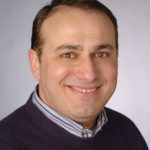 Juscelino F. Colares is the Schott-van den Eynden chair in Business Law and Associate Director of the Frederick K. Cox International Law Center at Case Western Reserve University School of Law. Colares teaches courses in civil procedure, international business law and international environmental law. His scholarship explores interjurisdictional problems that emerge in litigation involving conflicts between domestic regulatory law and international trade, environmental and business norms. Colares’s research has appeared in leading peer-reviewed journals and law reviews, including the Journal of Empirical Legal Studies, Journal of International Economic Law, Journal of World Trade, Jurimetrics, Revista dos Tribunais (Brazil), Columbia Journal of European Law, Cornell International Law Journal, Georgetown International Environmental Law Review and Vanderbilt Journal of Transnational Law. A former clerk for the Hon. Jean-Louis Debré, Chief Justice of the Conseil constitutionnel (the French Constitutional Court) (2008-09 term), Colares was also a visiting professor at Ecole normale supérieure in Paris. Prior to becoming a law professor, Colares, a Brazilian-born, naturalized U.S. citizen, practiced at Dewey Ballantine, LLP in Washington, D.C., where he litigated trade cases before federal agencies, federal courts and NAFTA panels. A versatile scholar, lawyer and economist, Colares was recently reappointed by the Office of the United Trade Representative to serve on the United States Roster of NAFTA Chapter 19 (Trade) Panelists. Contact: colares@case.edu 216.368.6387 Website: http://law.case.edu/OurSchool/FacultyStaff/MeetOurFaculty/FacultyDetail.aspx?id=993
Juscelino F. Colares is the Schott-van den Eynden chair in Business Law and Associate Director of the Frederick K. Cox International Law Center at Case Western Reserve University School of Law. Colares teaches courses in civil procedure, international business law and international environmental law. His scholarship explores interjurisdictional problems that emerge in litigation involving conflicts between domestic regulatory law and international trade, environmental and business norms. Colares’s research has appeared in leading peer-reviewed journals and law reviews, including the Journal of Empirical Legal Studies, Journal of International Economic Law, Journal of World Trade, Jurimetrics, Revista dos Tribunais (Brazil), Columbia Journal of European Law, Cornell International Law Journal, Georgetown International Environmental Law Review and Vanderbilt Journal of Transnational Law. A former clerk for the Hon. Jean-Louis Debré, Chief Justice of the Conseil constitutionnel (the French Constitutional Court) (2008-09 term), Colares was also a visiting professor at Ecole normale supérieure in Paris. Prior to becoming a law professor, Colares, a Brazilian-born, naturalized U.S. citizen, practiced at Dewey Ballantine, LLP in Washington, D.C., where he litigated trade cases before federal agencies, federal courts and NAFTA panels. A versatile scholar, lawyer and economist, Colares was recently reappointed by the Office of the United Trade Representative to serve on the United States Roster of NAFTA Chapter 19 (Trade) Panelists. Contact: colares@case.edu 216.368.6387 Website: http://law.case.edu/OurSchool/FacultyStaff/MeetOurFaculty/FacultyDetail.aspx?id=993
 Craig J. Copi is a senior instructor in the Case Western Reserve University Department of Physics. His research concentrations are in Theoretical particle-astrophysics, Cosmology, Cosmic Microwave Background, and the Early Universe.
Craig J. Copi is a senior instructor in the Case Western Reserve University Department of Physics. His research concentrations are in Theoretical particle-astrophysics, Cosmology, Cosmic Microwave Background, and the Early Universe.
Website: http://physics.case.edu/faculty/craig-j-copi/
 Corbin Covault is Professor of Physics at Case Western Reserve University. There, Covault leads the High Energy Astrophysics group within the physics department. His main research activity is the study of the origin of the highest energy cosmic rays using the Pierre Auger Cosmic Ray Observatory. The origin and nature of cosmic rays remains a profound astrophysical scientific mystery, touching areas of particle physics, astrophysics, and cosmology. Corbin Covault also studies the application of astrophysical detector techniques to the search for extra-terrestrial intelligence (SETI), and is working to develop the Scanning Observatory For Optical SETI (SOPHOS), a dedicated array of telescopes to look for nanosecond laser flashes from extra-terrestrial sources. Contact: cec8@cwru.edu, 216.368.4006, Website: http://hea.cwru.edu/
Corbin Covault is Professor of Physics at Case Western Reserve University. There, Covault leads the High Energy Astrophysics group within the physics department. His main research activity is the study of the origin of the highest energy cosmic rays using the Pierre Auger Cosmic Ray Observatory. The origin and nature of cosmic rays remains a profound astrophysical scientific mystery, touching areas of particle physics, astrophysics, and cosmology. Corbin Covault also studies the application of astrophysical detector techniques to the search for extra-terrestrial intelligence (SETI), and is working to develop the Scanning Observatory For Optical SETI (SOPHOS), a dedicated array of telescopes to look for nanosecond laser flashes from extra-terrestrial sources. Contact: cec8@cwru.edu, 216.368.4006, Website: http://hea.cwru.edu/
 Darin Croft is a paleomammalogist and a Professor in the Department of Anatomy in the School of Medicine. He primarily divides his time between teaching head and neck anatomy to medical and graduate students and studying the anatomy and biology of extinct mammals. Dr. Croft’s research centers on the mammals of South America, which include a variety of rodents, sloths, armadillos, marsupials, and endemic hoofed mammals. He currently has active paleontological field programs in Bolivia and Chile and recently received a Fulbright U.S. Scholar fellowship to develop new projects in Argentina. Dr. Croft participates in a variety of scientific and educational activities at the Cleveland Museum of Natural History and is a Research Associate at the American Museum of Natural History, the Carnegie Museum of Natural History, and the Field Museum in Chicago. He recently authored a book entitled “Horned Armadillos and Rafting Monkeys: The Fascinating Fossil Mammals of South America” that won gold medal in the Science category of the 2017 Independent Publisher Book Awards. Contact: dac34@case.edu 216.368.5268, Website: http://dcpaleo.org/
Darin Croft is a paleomammalogist and a Professor in the Department of Anatomy in the School of Medicine. He primarily divides his time between teaching head and neck anatomy to medical and graduate students and studying the anatomy and biology of extinct mammals. Dr. Croft’s research centers on the mammals of South America, which include a variety of rodents, sloths, armadillos, marsupials, and endemic hoofed mammals. He currently has active paleontological field programs in Bolivia and Chile and recently received a Fulbright U.S. Scholar fellowship to develop new projects in Argentina. Dr. Croft participates in a variety of scientific and educational activities at the Cleveland Museum of Natural History and is a Research Associate at the American Museum of Natural History, the Carnegie Museum of Natural History, and the Field Museum in Chicago. He recently authored a book entitled “Horned Armadillos and Rafting Monkeys: The Fascinating Fossil Mammals of South America” that won gold medal in the Science category of the 2017 Independent Publisher Book Awards. Contact: dac34@case.edu 216.368.5268, Website: http://dcpaleo.org/
 Christopher Cullis is Francis Hobart Herrick Professor of Biology and is a past Dean of Mathematics and Natural Sciences and Chair of the Department of Biology. His research for the past 45 years has focused on rapid changes in the plant genome. His primary project has been to identify the genome sites in flax that respond to environmental stresses and produce rearrangements that appear to be adaptive to the plant and how this related to plant adaptation to stress environments. In this work he has discovered a new genome editing process. His understanding of the plant genome is also being applied to food security issues in the developing world through collaborations with Namibian and South African scientists to domesticate the marama bean (Tylosema esculentum). This plant is one of the identified neglected orphan crops and has been used as a food and energy source by the San bushmen for many generations. He is involved in applying his knowledge and experience in the developing world to help produce new knowledge and opportunities for scientists and the students there. Contact: christopher.cullis@case.edu 216.368.5110, Website: http://biology.case.edu/faculty/christopher-cullis/
Christopher Cullis is Francis Hobart Herrick Professor of Biology and is a past Dean of Mathematics and Natural Sciences and Chair of the Department of Biology. His research for the past 45 years has focused on rapid changes in the plant genome. His primary project has been to identify the genome sites in flax that respond to environmental stresses and produce rearrangements that appear to be adaptive to the plant and how this related to plant adaptation to stress environments. In this work he has discovered a new genome editing process. His understanding of the plant genome is also being applied to food security issues in the developing world through collaborations with Namibian and South African scientists to domesticate the marama bean (Tylosema esculentum). This plant is one of the identified neglected orphan crops and has been used as a food and energy source by the San bushmen for many generations. He is involved in applying his knowledge and experience in the developing world to help produce new knowledge and opportunities for scientists and the students there. Contact: christopher.cullis@case.edu 216.368.5110, Website: http://biology.case.edu/faculty/christopher-cullis/
 Lisa Damato is Associate Professor of Nursing and Neurosciences at Case Western Reserve University. She completed her undergraduate work at Vanderbilt University and received graduate degrees from the University of Pennsylvania and Boston College. In addition to an extensive clinical background, she has also completed formal training in neurobiology and neuroanatomy, histology and ultrastructure at Case Western Reserve School of Medicine. Her research program focuses on characterization of symptoms of central nervous system activity during stress, psychological challenge and sleep restriction, and includes defining neurobiological and neurophysiological mechanisms underlying symptoms of fatigue, cognitive impairment and persistent hypersomnolence. Contact: egd@case.edu 216.368.2597, Website: https://nursing.case.edu/neuro/people/.
Lisa Damato is Associate Professor of Nursing and Neurosciences at Case Western Reserve University. She completed her undergraduate work at Vanderbilt University and received graduate degrees from the University of Pennsylvania and Boston College. In addition to an extensive clinical background, she has also completed formal training in neurobiology and neuroanatomy, histology and ultrastructure at Case Western Reserve School of Medicine. Her research program focuses on characterization of symptoms of central nervous system activity during stress, psychological challenge and sleep restriction, and includes defining neurobiological and neurophysiological mechanisms underlying symptoms of fatigue, cognitive impairment and persistent hypersomnolence. Contact: egd@case.edu 216.368.2597, Website: https://nursing.case.edu/neuro/people/.
 Jean-Eudes Dazard is Assistant Professor, Center for Proteomics and Bioinformatics at Case Western Reserve University. His research interest is in computational/statistical biology with emphasis on developing data mining methods in high dimensional settings. Data are mostly from high-throughput or “omics” data as generated by microarray, proteomics and high-throughput sequencing technologies. Conventional statistical techniques and methods literally fall apart or are inappropriate at best when dealing with modern large datasets where the number of variables greatly exceeds the number of observations (so-called p >> n paradigm). It is a hard problem with several statistical issues causing potential risks of severe errors and model unfitting. Particular challenges posed by high dimensional data are the multiplicity of inferences and the control of error rates, the multi-collinearity of predictors due to the parallel nature of the variables, and finally the sparsity due to inherent noise from the employed technologies and the fewness of variables at play compared to the massive number of variables interrogated. Some of his recent foci has been in bump hunting problems in Classification, Regression, and Survival settings, with general applications in developing risk and reliability analysis tools, as well as clinical applications in diagnostic and prognostic tools for personalized medicine. Website: http://proteomics.case.edu/faculty/jean-eudes_dazard.html
Jean-Eudes Dazard is Assistant Professor, Center for Proteomics and Bioinformatics at Case Western Reserve University. His research interest is in computational/statistical biology with emphasis on developing data mining methods in high dimensional settings. Data are mostly from high-throughput or “omics” data as generated by microarray, proteomics and high-throughput sequencing technologies. Conventional statistical techniques and methods literally fall apart or are inappropriate at best when dealing with modern large datasets where the number of variables greatly exceeds the number of observations (so-called p >> n paradigm). It is a hard problem with several statistical issues causing potential risks of severe errors and model unfitting. Particular challenges posed by high dimensional data are the multiplicity of inferences and the control of error rates, the multi-collinearity of predictors due to the parallel nature of the variables, and finally the sparsity due to inherent noise from the employed technologies and the fewness of variables at play compared to the massive number of variables interrogated. Some of his recent foci has been in bump hunting problems in Classification, Regression, and Survival settings, with general applications in developing risk and reliability analysis tools, as well as clinical applications in diagnostic and prognostic tools for personalized medicine. Website: http://proteomics.case.edu/faculty/jean-eudes_dazard.html
 Claudia de Rham is a member of the Faculty of Natural Sciences, Department of Physics at Imperial College London. She is a theoretical cosmologist studying the mysteries of the Universe and particularly the nature of dark energy which accounts for about 70% of the Energy budget of the Universe. Claudia de Rham is exploring the validity of General Relativity on cosmological scale and contemplating the possibility that gravity could have a finite range. From an effective quantum field perspective this possibility would correspond to giving a mass to the particle carrier of the gravitational force: the graviton and may help explaining the late time acceleration of the Universe. Website: https://www.imperial.ac.uk/people/c.de-rham
Claudia de Rham is a member of the Faculty of Natural Sciences, Department of Physics at Imperial College London. She is a theoretical cosmologist studying the mysteries of the Universe and particularly the nature of dark energy which accounts for about 70% of the Energy budget of the Universe. Claudia de Rham is exploring the validity of General Relativity on cosmological scale and contemplating the possibility that gravity could have a finite range. From an effective quantum field perspective this possibility would correspond to giving a mass to the particle carrier of the gravitational force: the graviton and may help explaining the late time acceleration of the Universe. Website: https://www.imperial.ac.uk/people/c.de-rham
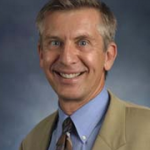 Mike Decker is an Associate Professor of Nursing, Neurosciences, Physiology, and Biophysics at Case Western Reserve University. He received his doctoral training from the Department of Anatomy, Case Western Reserve University School of Medicine. He subsequently was recruited into the Department of Neurology at Emory University (2000-2007), and then into the Centers for Disease Control and Prevention (2007-2011). He is a basic and clinical scientist with extensive experience characterizing physiologic mechanisms facilitating life at high altitude and central nervous system function. His research interests focus upon (1) defining mechanisms conferring resilience to extreme environments, (2) characterizing brain dysfunction induced by low environmental oxygen, and (3) developing novel interventions to augment and protect central nervous system function. Contact: mjd6@case.edu; 216.368.2912, Website: https://nursing.case.edu/neuro/people/.
Mike Decker is an Associate Professor of Nursing, Neurosciences, Physiology, and Biophysics at Case Western Reserve University. He received his doctoral training from the Department of Anatomy, Case Western Reserve University School of Medicine. He subsequently was recruited into the Department of Neurology at Emory University (2000-2007), and then into the Centers for Disease Control and Prevention (2007-2011). He is a basic and clinical scientist with extensive experience characterizing physiologic mechanisms facilitating life at high altitude and central nervous system function. His research interests focus upon (1) defining mechanisms conferring resilience to extreme environments, (2) characterizing brain dysfunction induced by low environmental oxygen, and (3) developing novel interventions to augment and protect central nervous system function. Contact: mjd6@case.edu; 216.368.2912, Website: https://nursing.case.edu/neuro/people/.
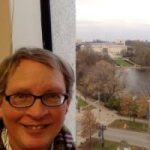 Emily Dragowsky is a senior research associate in the Department of Physics at Case Western Reserve University.
Emily Dragowsky is a senior research associate in the Department of Physics at Case Western Reserve University.
Website: http://artsci.case.edu/psra/emily-dragowsky/
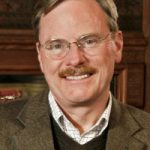 James Edmonson is Chief Curator of the Dittrick Medical History Center and Museum, an interdisciplinary study center in the College of Arts and Sciences at CWRU. He received his M.A. and Ph.D in the history of technology in the Hagley Graduate Program of the University of Delaware. Edmonson spends most of his time working with the remarkably rich collection of rare medical books, archives, and medical objects at the Dittrick. He is the author of American Surgical Instruments (1997), and his most recent work is Dissection: Photographs of a Rite of Passage in American Medicine, 1880-1920 (2009). Notable collections under his care at the Dittrick include the Percy Skuy Collection on the History of Contraception and the Stecher Collection of Darwiniana, which includes 180 letters of Charles Darwin’s correspondence. Edmonson has served on the Council of the American Association for the History of Medicine (2006-10), UMAC (University Museums and Collections) of ICOM (International Council of Museums), and is the American liaison and secretary general of the European Association of Museums of the History of Medical Sciences. He has been consultant to medical museums and collections including the Warren Anatomical Museum of Harvard University and the New York Academy of Medicine, and has served on grant review panels of the National Library of Medicine and the National Endowment for the Humanities. Contact: james.edmonson@case.edu 216-368-6391 Website: http://history.case.edu/staff/james-edmonson/
James Edmonson is Chief Curator of the Dittrick Medical History Center and Museum, an interdisciplinary study center in the College of Arts and Sciences at CWRU. He received his M.A. and Ph.D in the history of technology in the Hagley Graduate Program of the University of Delaware. Edmonson spends most of his time working with the remarkably rich collection of rare medical books, archives, and medical objects at the Dittrick. He is the author of American Surgical Instruments (1997), and his most recent work is Dissection: Photographs of a Rite of Passage in American Medicine, 1880-1920 (2009). Notable collections under his care at the Dittrick include the Percy Skuy Collection on the History of Contraception and the Stecher Collection of Darwiniana, which includes 180 letters of Charles Darwin’s correspondence. Edmonson has served on the Council of the American Association for the History of Medicine (2006-10), UMAC (University Museums and Collections) of ICOM (International Council of Museums), and is the American liaison and secretary general of the European Association of Museums of the History of Medical Sciences. He has been consultant to medical museums and collections including the Warren Anatomical Museum of Harvard University and the New York Academy of Medicine, and has served on grant review panels of the National Library of Medicine and the National Endowment for the Humanities. Contact: james.edmonson@case.edu 216-368-6391 Website: http://history.case.edu/staff/james-edmonson/
 Charis Eng MD, PhD is the Chair and founding Director of the Genomic Medicine Institute of the Cleveland Clinic, founding Director and attending clinical cancer geneticist of the institute’s clinical component, the Center for Personalized Genetic Healthcare, and Professor and Vice Chairman of the Department of Genetics at Case Western Reserve University School of Medicine. She holds a joint appointment as Professor of Molecular Medicine at the Cleveland Clinic Lerner College of Medicine and is a member of Cleveland Clinic’s Taussig Cancer Center and of the CASE Comprehensive Cancer Center. Dr. Eng was honored with the Sondra J. and Stephen R. Hardis Endowed Chair in Cancer Genomic Medicine in 2008 and the American Cancer Society Clinical Research Professorship in 2009. More recently, she was elected to the National Academy of Medicine (previously known as Institute of Medicine) of the US National Academies of Sciences for her achievements and leadership in genetics- and genomics-based research and personalized healthcare. She continues to hold an honorary appointment at the University of Cambridge. Dr. Eng’s research interests may be broadly characterized as clinical cancer genetics translational research. Her work on RET testing in multiple endocrine neoplasia type 2 and characterization of the widening clinical spectra of PTEN mutations have been acknowledged as the paradigm for the practice of clinical cancer genetics. At the clinical interface, Dr. Eng is acknowledged as one of the rare go to people on what is and how to implement genetic- and omics-enabled personalized healthcare. Website: http://my.clevelandclinic.org/staff_directory/staff_display?DoctorID=6757
Charis Eng MD, PhD is the Chair and founding Director of the Genomic Medicine Institute of the Cleveland Clinic, founding Director and attending clinical cancer geneticist of the institute’s clinical component, the Center for Personalized Genetic Healthcare, and Professor and Vice Chairman of the Department of Genetics at Case Western Reserve University School of Medicine. She holds a joint appointment as Professor of Molecular Medicine at the Cleveland Clinic Lerner College of Medicine and is a member of Cleveland Clinic’s Taussig Cancer Center and of the CASE Comprehensive Cancer Center. Dr. Eng was honored with the Sondra J. and Stephen R. Hardis Endowed Chair in Cancer Genomic Medicine in 2008 and the American Cancer Society Clinical Research Professorship in 2009. More recently, she was elected to the National Academy of Medicine (previously known as Institute of Medicine) of the US National Academies of Sciences for her achievements and leadership in genetics- and genomics-based research and personalized healthcare. She continues to hold an honorary appointment at the University of Cambridge. Dr. Eng’s research interests may be broadly characterized as clinical cancer genetics translational research. Her work on RET testing in multiple endocrine neoplasia type 2 and characterization of the widening clinical spectra of PTEN mutations have been acknowledged as the paradigm for the practice of clinical cancer genetics. At the clinical interface, Dr. Eng is acknowledged as one of the rare go to people on what is and how to implement genetic- and omics-enabled personalized healthcare. Website: http://my.clevelandclinic.org/staff_directory/staff_display?DoctorID=6757
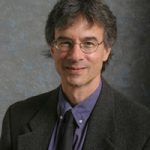 Seve Eppell is Associate Professor of Biomedical Engineering at Case Western Reserve University. The focus of research in his laboratory in on orthopedic biomaterials. Fixation of implants (a biochemical phenomenon) and stress shielding (a biomechanical phenomenon) are two of the major clinical problems associated with currently available biomaterials. We are interested in taking a first principles approach to understanding molecular interactions leading to biochemical and biomechanical function of cartilage and bone. His lab’s emphasis is on analysis of these tissues at the sub-molecular level which is accomplished by the development and use of nanoscale instrumentation. Currently they are applying these techniques to the study of collagens and the fundamental mineral units found in bone. The results of these experiments will guide researchers away from the use of homogenous materials (like the clinically popular Ti and Co based alloys) and toward more sophisticated hierarchical composites. Website: http://engineering.case.edu/profiles/sje
Seve Eppell is Associate Professor of Biomedical Engineering at Case Western Reserve University. The focus of research in his laboratory in on orthopedic biomaterials. Fixation of implants (a biochemical phenomenon) and stress shielding (a biomechanical phenomenon) are two of the major clinical problems associated with currently available biomaterials. We are interested in taking a first principles approach to understanding molecular interactions leading to biochemical and biomechanical function of cartilage and bone. His lab’s emphasis is on analysis of these tissues at the sub-molecular level which is accomplished by the development and use of nanoscale instrumentation. Currently they are applying these techniques to the study of collagens and the fundamental mineral units found in bone. The results of these experiments will guide researchers away from the use of homogenous materials (like the clinically popular Ti and Co based alloys) and toward more sophisticated hierarchical composites. Website: http://engineering.case.edu/profiles/sje
 Peter Faulhaber is Professor of Radiology at Case Western Reserve University and Director of Clinical PET at University Case Medical Center. He was steward of the transition of PET as a research tool to a clinical modality, and finally the transition to PET/CT. His clinical interests include all aspects of PET imaging in oncology, neurology and cardiology. Dr. Faulhaber is particularly interested patient outcomes based on PET imaging. He has numerous research collaborations with clinical and basic research colleagues in ovarian, prostate and breast cancer, for example. Dr. Faulhaber is involved in the implementation of the new modality PET/MRI at University Hospitals Case Medical Center. He is part of a recent State of Ohio Third Frontier Award in PET/MRI applications in breast cancer. Dr. Faulhaber now is leading the initial clinical testing of a new PET detector solution from Philips Healthcare. Website: http://www.uhhospitals.org/find-a-doctor/faulhaber-peter-8888
Peter Faulhaber is Professor of Radiology at Case Western Reserve University and Director of Clinical PET at University Case Medical Center. He was steward of the transition of PET as a research tool to a clinical modality, and finally the transition to PET/CT. His clinical interests include all aspects of PET imaging in oncology, neurology and cardiology. Dr. Faulhaber is particularly interested patient outcomes based on PET imaging. He has numerous research collaborations with clinical and basic research colleagues in ovarian, prostate and breast cancer, for example. Dr. Faulhaber is involved in the implementation of the new modality PET/MRI at University Hospitals Case Medical Center. He is part of a recent State of Ohio Third Frontier Award in PET/MRI applications in breast cancer. Dr. Faulhaber now is leading the initial clinical testing of a new PET detector solution from Philips Healthcare. Website: http://www.uhhospitals.org/find-a-doctor/faulhaber-peter-8888
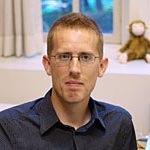 Simon Fitzpatrick is Associate Professor of Philosophy at John Carroll University. Dr. Fitzpatrick has special interest in philosophy of mind and psychology, philosophy of science, and philosophy of biology. His current research topics include normative cognition in non-human animals, the role of reasoning about intentions and other mental states in moral judgment (including work in conjunction with the AHRC Culture and The Mind Project, the history of scientific debates about animal minds, especially the work of Conwy Lloyd Morgan and simplicity / parsimony in science (Ockham’s Razor). Learn more about his work at his, Website: http://sites.jcu.edu/philosophy/professor/simon-fitzpatrick/
Simon Fitzpatrick is Associate Professor of Philosophy at John Carroll University. Dr. Fitzpatrick has special interest in philosophy of mind and psychology, philosophy of science, and philosophy of biology. His current research topics include normative cognition in non-human animals, the role of reasoning about intentions and other mental states in moral judgment (including work in conjunction with the AHRC Culture and The Mind Project, the history of scientific debates about animal minds, especially the work of Conwy Lloyd Morgan and simplicity / parsimony in science (Ockham’s Razor). Learn more about his work at his, Website: http://sites.jcu.edu/philosophy/professor/simon-fitzpatrick/
 Chris Flask is Associate Professor of Radiology with Secondary Appointments in Biomedical Engineering, and Pediatrics; Scientific Director, Case Center for Imaging Research at the Case Western Reserve School of Medicine. His research interests include Quantitative Magnetic Resonance Imaging, MRI Physics and Pulse Sequence Design, Lung imaging with a focus on cystic fibrosis, Kidney imaging with a focus on polycystic kidney disease, sickle cell disease, diabetic nephropathy, and liver imaging with a focus inflammation and fibrosis. Website: https://www.case.edu/medicine/ccir/faculty/chris-a-flask-phd.html
Chris Flask is Associate Professor of Radiology with Secondary Appointments in Biomedical Engineering, and Pediatrics; Scientific Director, Case Center for Imaging Research at the Case Western Reserve School of Medicine. His research interests include Quantitative Magnetic Resonance Imaging, MRI Physics and Pulse Sequence Design, Lung imaging with a focus on cystic fibrosis, Kidney imaging with a focus on polycystic kidney disease, sickle cell disease, diabetic nephropathy, and liver imaging with a focus inflammation and fibrosis. Website: https://www.case.edu/medicine/ccir/faculty/chris-a-flask-phd.html
 Rodney Folz is Division Chief of Pulmonary and Critical Care at University Hospital Cleveland Medical Center and professor of Medicine at Case Western Reserve School of Medicine. His current research interests include asthma, chronic obstructive pulmonary disease, pulmonary complications of bone marrow transplanttation, and advanced pulmonary function testing. Website: http://www.uhhospitals.org/find-a-doctor/folz-rodney-32995
Rodney Folz is Division Chief of Pulmonary and Critical Care at University Hospital Cleveland Medical Center and professor of Medicine at Case Western Reserve School of Medicine. His current research interests include asthma, chronic obstructive pulmonary disease, pulmonary complications of bone marrow transplanttation, and advanced pulmonary function testing. Website: http://www.uhhospitals.org/find-a-doctor/folz-rodney-32995
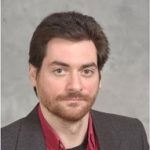 Roberto Fernández Galán is an Assistant Professor in the Case Western Reserve University School of Engineering in the Department of Electrical Engineering and Computer Science. His lab combines theoretical, computational, and experimental methods to investigate several topics in systems biology and neuroscience. Current and recent research projects include analyzing heart rate variability and autonomic imbalance in epilepsy, determining the relationship between network oscillations and functional brain connectivity, monitoring serotonergic modulation of spontaneous activity in the neocortex, and mapping abnormal neural network connectivity and dynamics in the brains of serotonin-deficient mice. Learn more about his lab and his work at the website: http://www.case.edu/med/galanlab/research.html
Roberto Fernández Galán is an Assistant Professor in the Case Western Reserve University School of Engineering in the Department of Electrical Engineering and Computer Science. His lab combines theoretical, computational, and experimental methods to investigate several topics in systems biology and neuroscience. Current and recent research projects include analyzing heart rate variability and autonomic imbalance in epilepsy, determining the relationship between network oscillations and functional brain connectivity, monitoring serotonergic modulation of spontaneous activity in the neocortex, and mapping abnormal neural network connectivity and dynamics in the brains of serotonin-deficient mice. Learn more about his lab and his work at the website: http://www.case.edu/med/galanlab/research.html
 Evalyn Gates has expertise in the fields of cosmology and particle physics and prominence nationally for her work to improve science education and broaden opportunities for women and minorities in science careers. She lead the Cleveland Museum of Natural History through an ambitious renovation and expansion, while working to enhance the institution’s impact at local and national levels. She began her career as a particle physicist researching neutrinos, and then transitioned to cosmology for the opportunities it afforded her to explore the interplay between subatomic particles and large-scale phenomena in space. Gates worked to map the curves of dark matter in space and study white dwarfs, which are fossil stars. The technique that she used for this research, gravitational lensing, became the centerpiece of her 2009 book, Einstein’s Telescope: The Hunt for Dark Matter and Dark Energy in the Universe. While planning occupies a significant portion of her time at the Museum, Gates remains dedicated to improving science education and expanding science career opportunities for women and minorities. Two local educational programs she has championed, the Inspire: Reach Every Child program for second graders in the Cleveland Metropolitan School District and Dare to Explore Science for girls in grades 5 through 8, have earned accolades for the Museum. On a national level she serves on the Panel on Public Affairs for the American Physical Society, which addresses these issues.
Evalyn Gates has expertise in the fields of cosmology and particle physics and prominence nationally for her work to improve science education and broaden opportunities for women and minorities in science careers. She lead the Cleveland Museum of Natural History through an ambitious renovation and expansion, while working to enhance the institution’s impact at local and national levels. She began her career as a particle physicist researching neutrinos, and then transitioned to cosmology for the opportunities it afforded her to explore the interplay between subatomic particles and large-scale phenomena in space. Gates worked to map the curves of dark matter in space and study white dwarfs, which are fossil stars. The technique that she used for this research, gravitational lensing, became the centerpiece of her 2009 book, Einstein’s Telescope: The Hunt for Dark Matter and Dark Energy in the Universe. While planning occupies a significant portion of her time at the Museum, Gates remains dedicated to improving science education and expanding science career opportunities for women and minorities. Two local educational programs she has championed, the Inspire: Reach Every Child program for second graders in the Cleveland Metropolitan School District and Dare to Explore Science for girls in grades 5 through 8, have earned accolades for the Museum. On a national level she serves on the Panel on Public Affairs for the American Physical Society, which addresses these issues.
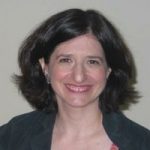 Rebecca German is Professor of Biomedical sciences at Kent State University. She received her Ph.D from Harvard University and is pursuing research interests in neurophysiology and biomechanics, with focus on the regulation of feeding and pathophysiology of dysphagia. Learn more about her work at her website: http://www.neomed.edu/media-library/story-bank/2014/women-in-research/rebecca-german
Rebecca German is Professor of Biomedical sciences at Kent State University. She received her Ph.D from Harvard University and is pursuing research interests in neurophysiology and biomechanics, with focus on the regulation of feeding and pathophysiology of dysphagia. Learn more about her work at her website: http://www.neomed.edu/media-library/story-bank/2014/women-in-research/rebecca-german
 Stan Gerson is Professor of Hematological Oncology; Director, Case Comprehensive Cancer Center; Director, Center for Stem Cell and Regenerative Medicine. Dr. Gerson’s research interests include stem cells and DNA repair. In his stem cell research, he developed mesenchymal stem cells as a therapeutic infusion for blood stem cell transplantation and for the correction of genetic disorders. He identified a gene therapy strategy method that creates drug-resistant stem cells capable of selectively repopulating the recipient without the need for high-dose toxic therapy. He has developed inhibitors of DNA repair to improve the efficacy of anti-cancer agents, and transgenic mouse models that examine the role of critical genes in the stability of stem cell populations over the lifetime of the animal. These studies may predict stem cell diseases of aging and cancer. His research has generated 12 patents in the area of gene therapy and cancer drug development that have been licensed to three companies. His leadership of the Stem Cell Center and the Cancer Center involve coordinating research throughout the medical centers in Cleveland. He is also leading University Hospitals’ effort to bring cancer care under one roof in the New Cancer Hospital scheduled to open in 2010. Contact: slg5@case.edu 216.844.8565, Website: http://pharmacology.case.edu/department/faculty/trainers/pages/gerson.aspx
Stan Gerson is Professor of Hematological Oncology; Director, Case Comprehensive Cancer Center; Director, Center for Stem Cell and Regenerative Medicine. Dr. Gerson’s research interests include stem cells and DNA repair. In his stem cell research, he developed mesenchymal stem cells as a therapeutic infusion for blood stem cell transplantation and for the correction of genetic disorders. He identified a gene therapy strategy method that creates drug-resistant stem cells capable of selectively repopulating the recipient without the need for high-dose toxic therapy. He has developed inhibitors of DNA repair to improve the efficacy of anti-cancer agents, and transgenic mouse models that examine the role of critical genes in the stability of stem cell populations over the lifetime of the animal. These studies may predict stem cell diseases of aging and cancer. His research has generated 12 patents in the area of gene therapy and cancer drug development that have been licensed to three companies. His leadership of the Stem Cell Center and the Cancer Center involve coordinating research throughout the medical centers in Cleveland. He is also leading University Hospitals’ effort to bring cancer care under one roof in the New Cancer Hospital scheduled to open in 2010. Contact: slg5@case.edu 216.844.8565, Website: http://pharmacology.case.edu/department/faculty/trainers/pages/gerson.aspx
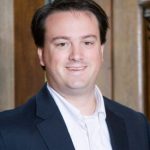 John T., Jr. (Tom) Giblin is currently the Harvey F. Lodish Development Professor of Natural Science and Assistant Professor of Physics at Kenyon College and an Adjunct Assistant Professor of Physics at Case Western Reserve University. In his view, Cosmology represents a bridge between fundamental physics and particle phenomenology. The goal of the contemporary cosmologist is to search for models of the early universe that satisfy the current observational tests and to search for new ways to discriminate between these models. Tom Giblin is interested in how gravity and quantum field theory can lead to natural models of the early universe and specifically how these models might emerge from various extensions of the Standard Model. He is also very interested in how observations of both electromagnetic and gravitational radiation can identify viable cosmological scenarios. Cosmology is at a stage in which precise calculations and predictions are necessary to discern between different models. Tom tackles those questions that can be answered by numerical analysis or computer simulation. The particular computational tools he employs vary from project to project and include lattice simulations (including spectral methods), finite-element analysis, Monte-Carlo parameter estimation, and multi-processor computing. Website: http://cosmo.kenyon.edu/tom.html.
John T., Jr. (Tom) Giblin is currently the Harvey F. Lodish Development Professor of Natural Science and Assistant Professor of Physics at Kenyon College and an Adjunct Assistant Professor of Physics at Case Western Reserve University. In his view, Cosmology represents a bridge between fundamental physics and particle phenomenology. The goal of the contemporary cosmologist is to search for models of the early universe that satisfy the current observational tests and to search for new ways to discriminate between these models. Tom Giblin is interested in how gravity and quantum field theory can lead to natural models of the early universe and specifically how these models might emerge from various extensions of the Standard Model. He is also very interested in how observations of both electromagnetic and gravitational radiation can identify viable cosmological scenarios. Cosmology is at a stage in which precise calculations and predictions are necessary to discern between different models. Tom tackles those questions that can be answered by numerical analysis or computer simulation. The particular computational tools he employs vary from project to project and include lattice simulations (including spectral methods), finite-element analysis, Monte-Carlo parameter estimation, and multi-processor computing. Website: http://cosmo.kenyon.edu/tom.html.
 Jerold S. Goldberg spent most of his dental career at Case Western Reserve University where he became chair of oral and maxillofacial surgery at CWRU Dental School/University Hospitals of Cleveland. While chairman, he established a unique five-year, double degree training program in oral& maxillofacial surgery. In 2014, after 17 years as Dean, SODM, Dr. Goldberg stepped down to return to faculty. His areas of clinical interest include the treatment of children with congenital facial deformities, patients suffering from facial pain and those who would benefit from orthognathic surgery. His research interests are related to these clinical areas. He initiated the first program at CWRU exposing dental students to hospital activities and still remains active in this area. He has served organized dentistry on both the local and national levels. He was president of the Northeast Society of Oral & Maxillofacial Surgeons and has been active in the local dental society. He participated in the national board construction committee for the ADA and the advisory committee for the American Board of Oral & Maxillofacial Surgeons. He was also chair for the section of Oral & Maxillofacial Surgery of the American Association of Dental Schools. Dr. Goldberg has had a long-time interest in dentistry and the international scene. He has been involved with surgical missions to Mexico, Equador and Nepal, as well as an ongoing commitment to a craniofacial center which he co-founded in Klaipeda, Lithuania. He was inducted into the Order of Knights of the Grand Duke Gidimitas by the President of Lithuania. He has supported student exchanges throughout the United Kingdom, The Netherlands, Egypt, The Dominican Republic and Brazil. Contact: jgs@case.edu 216.368.6764, Website: https://dental.case.edu/
Jerold S. Goldberg spent most of his dental career at Case Western Reserve University where he became chair of oral and maxillofacial surgery at CWRU Dental School/University Hospitals of Cleveland. While chairman, he established a unique five-year, double degree training program in oral& maxillofacial surgery. In 2014, after 17 years as Dean, SODM, Dr. Goldberg stepped down to return to faculty. His areas of clinical interest include the treatment of children with congenital facial deformities, patients suffering from facial pain and those who would benefit from orthognathic surgery. His research interests are related to these clinical areas. He initiated the first program at CWRU exposing dental students to hospital activities and still remains active in this area. He has served organized dentistry on both the local and national levels. He was president of the Northeast Society of Oral & Maxillofacial Surgeons and has been active in the local dental society. He participated in the national board construction committee for the ADA and the advisory committee for the American Board of Oral & Maxillofacial Surgeons. He was also chair for the section of Oral & Maxillofacial Surgery of the American Association of Dental Schools. Dr. Goldberg has had a long-time interest in dentistry and the international scene. He has been involved with surgical missions to Mexico, Equador and Nepal, as well as an ongoing commitment to a craniofacial center which he co-founded in Klaipeda, Lithuania. He was inducted into the Order of Knights of the Grand Duke Gidimitas by the President of Lithuania. He has supported student exchanges throughout the United Kingdom, The Netherlands, Egypt, The Dominican Republic and Brazil. Contact: jgs@case.edu 216.368.6764, Website: https://dental.case.edu/
 Neil S. Greenspan is Professor of Pathology, an immunologist, and clinical pathologist at Case Western Reserve University. Since joining the faculty, Neil has studied immunity to bacterial and viral pathogens and autoimmunity in a mouse model of lupus and pursued the conceptual implications of evolution for understanding immunology and biomedical science more broadly. He has also directed the Histocompatibility and Immunogenetics Laboratory of University Hospitals Cleveland Medical Center since 1986. Neil teaches immunology and related fields to medical students, graduate students, undergraduates, and pathology residents. In other activities, Neil chaired the planning committee for Case Western Reserve’s “Celebration of Darwin and Evolution” that extended throughout the 2008-2009 academic year. He serves as a senior editor for Pathogens and Immunity, and senior correspondent for the Evolution and Medicine Review Contact: Neil.Greenspan@Case.edu 216.368.1280, Website: http://www.uhhospitals.org/find-a-doctor/greenspan-neil-523
Neil S. Greenspan is Professor of Pathology, an immunologist, and clinical pathologist at Case Western Reserve University. Since joining the faculty, Neil has studied immunity to bacterial and viral pathogens and autoimmunity in a mouse model of lupus and pursued the conceptual implications of evolution for understanding immunology and biomedical science more broadly. He has also directed the Histocompatibility and Immunogenetics Laboratory of University Hospitals Cleveland Medical Center since 1986. Neil teaches immunology and related fields to medical students, graduate students, undergraduates, and pathology residents. In other activities, Neil chaired the planning committee for Case Western Reserve’s “Celebration of Darwin and Evolution” that extended throughout the 2008-2009 academic year. He serves as a senior editor for Pathogens and Immunity, and senior correspondent for the Evolution and Medicine Review Contact: Neil.Greenspan@Case.edu 216.368.1280, Website: http://www.uhhospitals.org/find-a-doctor/greenspan-neil-523
 Larry Greksa is Chair of the Department of Anthropology at Case Western Reserve University. Lawrence P. Greksa (Professor; Ph.D., The Pennsylvania State University, 1980) is a human population biologist who utilizes evolutionary and ecological paradigms to examine the biological and cultural adaptations of humans to a variety of stressors. His dissertation research, for example, examined the impact of the socio-cultural stress of modernization on the physical fitness and cardio-respiratory health of American Samoans. Much of his research has focused on the question of whether highland Andeans have adapted to a physical environmental stress, hypobaric hypoxa, and, if so, what are the relative importance of developmental (i.e., processes occurring as a result of being raised at high-altitudes) and genetic (i.e., processes resulting from the actions of natural selection operating on populations with a long history of residence at high altitudes) factors in the acquisition of this adaptedness. His most recent work has focused on the Old Order Amish, particularly the demographic impact (fertility, out-migration rates, rates of joining the church) of the socio-cultural changes associated with the thus far successful attempt of the Amish to maintain their cultural integrity while at the same time adapting to changing economic conditions which have required them to have much higher levels of contact with the surrounding modernized society. Greksa teaches introductory courses in physical anthropology, upper level courses in human population biology, and quantitative methods. Website: http://www.case.edu/artsci/anth/greksa.html
Larry Greksa is Chair of the Department of Anthropology at Case Western Reserve University. Lawrence P. Greksa (Professor; Ph.D., The Pennsylvania State University, 1980) is a human population biologist who utilizes evolutionary and ecological paradigms to examine the biological and cultural adaptations of humans to a variety of stressors. His dissertation research, for example, examined the impact of the socio-cultural stress of modernization on the physical fitness and cardio-respiratory health of American Samoans. Much of his research has focused on the question of whether highland Andeans have adapted to a physical environmental stress, hypobaric hypoxa, and, if so, what are the relative importance of developmental (i.e., processes occurring as a result of being raised at high-altitudes) and genetic (i.e., processes resulting from the actions of natural selection operating on populations with a long history of residence at high altitudes) factors in the acquisition of this adaptedness. His most recent work has focused on the Old Order Amish, particularly the demographic impact (fertility, out-migration rates, rates of joining the church) of the socio-cultural changes associated with the thus far successful attempt of the Amish to maintain their cultural integrity while at the same time adapting to changing economic conditions which have required them to have much higher levels of contact with the surrounding modernized society. Greksa teaches introductory courses in physical anthropology, upper level courses in human population biology, and quantitative methods. Website: http://www.case.edu/artsci/anth/greksa.html
Mark Griswold is a Professor in Case Western Reserve School of Medicine’s Department of Radiology with Secondary Appointments in Biomedical Engineering, Physics, Electrical Engineering and Computer Science. His research interests include Magnetic Resonance Imaging, Quantitative Imaging, MR Fingerprinting, and MRI Hardware development. He is the recipient of CWRU School of Medicine Medal for Excellence in Health Science Innovation, 2014 and was appointed Fellow of the American Institute of Medical and Biological Engineering in 2012. Website: https://case.edu/medicine/ccir/faculty/mark-griswold-phd.html
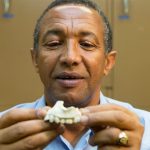 Yohannes Haile-Selassie is Curator of Physical Anthropology at the Cleveland Museum of Natural History. Yohannes Haile-Selassie’s paleoanthropological work centers on the Afar region of Ethiopia. He and his team will scour large areas looking for fossil remains dating less than 10 million years old. Their goal is to find specimens of human ancestors, but they also reconstruct fossil material of other animals to determine the ecology of the region when our ancestors walked, and determine what species our ancestors consumed or competed with. Dr. Haile-Selassie has been head of the Department of Physical Anthropology since 2002, and received his Ph.D. from UC-Berkeley before joining the museum staff. Contact: yhaileselassie@cmnh.org 216.231.4600 x3242, Website: https://www.cmnh.org/haile-selassie
Yohannes Haile-Selassie is Curator of Physical Anthropology at the Cleveland Museum of Natural History. Yohannes Haile-Selassie’s paleoanthropological work centers on the Afar region of Ethiopia. He and his team will scour large areas looking for fossil remains dating less than 10 million years old. Their goal is to find specimens of human ancestors, but they also reconstruct fossil material of other animals to determine the ecology of the region when our ancestors walked, and determine what species our ancestors consumed or competed with. Dr. Haile-Selassie has been head of the Department of Physical Anthropology since 2002, and received his Ph.D. from UC-Berkeley before joining the museum staff. Contact: yhaileselassie@cmnh.org 216.231.4600 x3242, Website: https://www.cmnh.org/haile-selassie
 Joe Hannibal is Curator of Invertebrate Paleontology at the Cleveland Museum of Natural History. Joe Hannibal has research interests in a broad range of paleontological, geological, and general natural history topics. His specialties include fossil millipedes and other fossil arthropods, particularly those found in Devonian and Pennsylvanian rocks. He has also been involved with a long-term study of the Paleozoic rock sequence of northeastern Ohio, and is also interested in the interface between geology and human culture. Contact: jhannibal@cmnh.org 216.231.4600 extension 3233. Website: https://www.cmnh.org/hannibal
Joe Hannibal is Curator of Invertebrate Paleontology at the Cleveland Museum of Natural History. Joe Hannibal has research interests in a broad range of paleontological, geological, and general natural history topics. His specialties include fossil millipedes and other fossil arthropods, particularly those found in Devonian and Pennsylvanian rocks. He has also been involved with a long-term study of the Paleozoic rock sequence of northeastern Ohio, and is also interested in the interface between geology and human culture. Contact: jhannibal@cmnh.org 216.231.4600 extension 3233. Website: https://www.cmnh.org/hannibal
 Mark Hans is Chair of School of Orthodontics at Case Western Reserve University’s School of Dental Medicine. Dr. Hans attended Yale University in New Haven, CT, where he earned his Bachelor of Science degree in Chemistry in 1975. Following graduation, Dr. Hans continued on to Case Western Reserve University, where he received his DDS in 1979 and his Master of Science in dentistry and orthodontics in 1981. During his education, Dr. Hans was honored several times, winning the Harry Sicher Award for Best Research by an Orthodontic Student and being granted a Presidential Teaching Fellowship. As one of the youngest doctors ever certified by the American Board of Orthodontics in 1989, Dr. Hans continues to maintain his board certification and was one of only a handful of doctors who volunteered to be re-examined by the board again in 2003. Website: https://dental.case.edu/orthodontics/
Mark Hans is Chair of School of Orthodontics at Case Western Reserve University’s School of Dental Medicine. Dr. Hans attended Yale University in New Haven, CT, where he earned his Bachelor of Science degree in Chemistry in 1975. Following graduation, Dr. Hans continued on to Case Western Reserve University, where he received his DDS in 1979 and his Master of Science in dentistry and orthodontics in 1981. During his education, Dr. Hans was honored several times, winning the Harry Sicher Award for Best Research by an Orthodontic Student and being granted a Presidential Teaching Fellowship. As one of the youngest doctors ever certified by the American Board of Orthodontics in 1989, Dr. Hans continues to maintain his board certification and was one of only a handful of doctors who volunteered to be re-examined by the board again in 2003. Website: https://dental.case.edu/orthodontics/
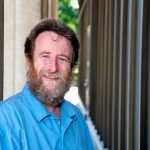 Paul Harding is Observatory Manager in the Case Western Reserve University Department of Astronomy.
Paul Harding is Observatory Manager in the Case Western Reserve University Department of Astronomy.
Website: http://astronomy.case.edu/staff/paul-harding/
 Peter Harte is a Professor of Genetics at Case Western Reserve University. Dr. Harte received his Ph.D. in Biology from Yale University in 1982 for work on the genetic control of visual system development in Drosophila. He was a postdoctoral fellow with David Hogness in the Department of Biochemistry at Stanford University, where he characterized the homeotic gene Ultrabithorax. His honors include Jane Coffin Childs Postdoctoral Fellow, G. Harold and Liela Y. Mathers Young Investigator Award, and he is on the Editorial Board of Mechanisms of Development. His lab is currently interested in the molecular mechanisms underlying regulation of homeotic gene expression during Drosophila development. The homeotic genes encode a family of transcription factors that act as key determinants of embryonic cell fates. Each is expressed in a different region of the embryo, programming the cells in which it is expressed to follow a specific developmental pathway. The Harte lab is interested in how the spatially restricted patterns of homeotic gene expression are established and stably maintained throughout development. Website: http://genetics.case.edu/page.php?page_id=5&LN=Harte&FN=Peter
Peter Harte is a Professor of Genetics at Case Western Reserve University. Dr. Harte received his Ph.D. in Biology from Yale University in 1982 for work on the genetic control of visual system development in Drosophila. He was a postdoctoral fellow with David Hogness in the Department of Biochemistry at Stanford University, where he characterized the homeotic gene Ultrabithorax. His honors include Jane Coffin Childs Postdoctoral Fellow, G. Harold and Liela Y. Mathers Young Investigator Award, and he is on the Editorial Board of Mechanisms of Development. His lab is currently interested in the molecular mechanisms underlying regulation of homeotic gene expression during Drosophila development. The homeotic genes encode a family of transcription factors that act as key determinants of embryonic cell fates. Each is expressed in a different region of the embryo, programming the cells in which it is expressed to follow a specific developmental pathway. The Harte lab is interested in how the spatially restricted patterns of homeotic gene expression are established and stably maintained throughout development. Website: http://genetics.case.edu/page.php?page_id=5&LN=Harte&FN=Peter
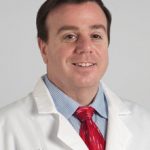 Stanley Hazen is Section Head of Cardiovascular Medicine at the Cleveland Clinic, and was elected into the National Academy of Medicine in 2016. Hazen’s research has contributed to new understandings of inflammation in cardiovascular disease and the development of new diagnostic and treatment tools. He and colleagues have received patents for devices and tests that identify patients at increased risk for cardiovascular disease and for diagnosing asthma and treating inflammation and associated complications. Among his awards are election to the American Society for Clinical Investigation and the American Association of Physicians. Hazen also is an elected fellow of the American Association for the Advancement of Science. He serves on multiple editorial boards and has received numerous NIH grants. Hazen received his MD from the Washington University School of Medicine and completed his residency in internal medicine at Barnes-Jewish Hospital in St. Louis, where he also completed a fellowship in endocrinology. Website: http://my.clevelandclinic.org/staff_directory/staff_display?DoctorID=2509
Stanley Hazen is Section Head of Cardiovascular Medicine at the Cleveland Clinic, and was elected into the National Academy of Medicine in 2016. Hazen’s research has contributed to new understandings of inflammation in cardiovascular disease and the development of new diagnostic and treatment tools. He and colleagues have received patents for devices and tests that identify patients at increased risk for cardiovascular disease and for diagnosing asthma and treating inflammation and associated complications. Among his awards are election to the American Society for Clinical Investigation and the American Association of Physicians. Hazen also is an elected fellow of the American Association for the Advancement of Science. He serves on multiple editorial boards and has received numerous NIH grants. Hazen received his MD from the Washington University School of Medicine and completed his residency in internal medicine at Barnes-Jewish Hospital in St. Louis, where he also completed a fellowship in endocrinology. Website: http://my.clevelandclinic.org/staff_directory/staff_display?DoctorID=2509
 Alexis Hobot
Alexis Hobot
Graduate Student, Case Western Reserve University
Website: https://www.linkedin.com/in/alexis-hobot-43193095
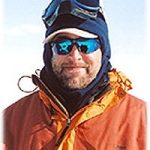 Ralph Harvey is Associate Professor in Geological Sciences at Case Western Reserve University. A graduate of Beloit College with a Ph.D. from the University of Pittsburgh, Ralph Harvey has been the principal investigator and field team leader for the U.S. Antarctic Search for Meteorites program since 1991. He is an author or co-author of more than 100 publications on diverse topics in the planetary sciences, ranging from micrometeorites to ice-sheet dynamics to the history of Mars. He is a principal investigator in NSF’s Office of Polar Programs as well as NASA’s Cosmochemistry and Mars Fundamental Research programs. He is a frequent contributor to science instrument and landing site definition panels for NASA’s Mars Exploration Program. Recently, he was a member of the preliminary examination team for the STARDUST sample return mission, and both an asteroid and an Antarctic mountain now bear his name. Contact: rph@case.edu 216.368.0198 Website: http://geology.cwru.edu/~harvey/research.html
Ralph Harvey is Associate Professor in Geological Sciences at Case Western Reserve University. A graduate of Beloit College with a Ph.D. from the University of Pittsburgh, Ralph Harvey has been the principal investigator and field team leader for the U.S. Antarctic Search for Meteorites program since 1991. He is an author or co-author of more than 100 publications on diverse topics in the planetary sciences, ranging from micrometeorites to ice-sheet dynamics to the history of Mars. He is a principal investigator in NSF’s Office of Polar Programs as well as NASA’s Cosmochemistry and Mars Fundamental Research programs. He is a frequent contributor to science instrument and landing site definition panels for NASA’s Mars Exploration Program. Recently, he was a member of the preliminary examination team for the STARDUST sample return mission, and both an asteroid and an Antarctic mountain now bear his name. Contact: rph@case.edu 216.368.0198 Website: http://geology.cwru.edu/~harvey/research.html
 Arthur Heuer is Distinguished University Professor Emeritus and Kyocera Professor Emeritus of Ceramics Materials Science and Engineering. With more than 550 publications to his credit, Arthur H. Heuer, Kyocera Professor of Ceramics, is a world-renowned leader in his field. Elected to the prestigious National Academy of Engineering in 1990, he has pioneered numerous studies in materials science, including application of electron microscopy to engineering ceramics, development of strong and tough ceramics, biological ceramics and paraequilibrium carburization of stainless steels. His decade-long collaboration with Swagelok Corporation has led to technological breakthroughs and an endowment for the Swagelok Center for Surface Analysis and Materials (SCSAM), an internationally renowned materials characterization facility. Heuer founded the center early in his career and continued to serve as its director until his retirement in 2016. Website: http://engineering.case.edu/profiles/ahh
Arthur Heuer is Distinguished University Professor Emeritus and Kyocera Professor Emeritus of Ceramics Materials Science and Engineering. With more than 550 publications to his credit, Arthur H. Heuer, Kyocera Professor of Ceramics, is a world-renowned leader in his field. Elected to the prestigious National Academy of Engineering in 1990, he has pioneered numerous studies in materials science, including application of electron microscopy to engineering ceramics, development of strong and tough ceramics, biological ceramics and paraequilibrium carburization of stainless steels. His decade-long collaboration with Swagelok Corporation has led to technological breakthroughs and an endowment for the Swagelok Center for Surface Analysis and Materials (SCSAM), an internationally renowned materials characterization facility. Heuer founded the center early in his career and continued to serve as its director until his retirement in 2016. Website: http://engineering.case.edu/profiles/ahh
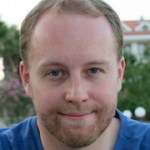 Michael Hinczewski is Warren E. Rupp Assistant Professor in the Case Western Reserve University department of Physics. His lab focuses on theoretical biophysics, and is interested in the mechanical dimension of cellular biology: the forces and deformations that propagate through the cell’s densely packed interior during transport, signaling, growth, and division. Thanks to advances in single-molecule experimental probes, researchers know that cellular mechanics are a critical factor in a variety of behaviors such as neural plasticity and cancer metastasis. The Hinczewski lab seeks to complete the picture through theoretical models that connect the long-time, large-scale dynamics of cellular processes—accessible to experiment—with microscopic descriptions that capture the essential physics and chemistry driving the system. Current areas of research include topics such as motor proteins, cell adhesion, cell signalling, force spectroscopy, and biopolymer dynamics. Website: http://biotheory.phys.cwru.edu/
Michael Hinczewski is Warren E. Rupp Assistant Professor in the Case Western Reserve University department of Physics. His lab focuses on theoretical biophysics, and is interested in the mechanical dimension of cellular biology: the forces and deformations that propagate through the cell’s densely packed interior during transport, signaling, growth, and division. Thanks to advances in single-molecule experimental probes, researchers know that cellular mechanics are a critical factor in a variety of behaviors such as neural plasticity and cancer metastasis. The Hinczewski lab seeks to complete the picture through theoretical models that connect the long-time, large-scale dynamics of cellular processes—accessible to experiment—with microscopic descriptions that capture the essential physics and chemistry driving the system. Current areas of research include topics such as motor proteins, cell adhesion, cell signalling, force spectroscopy, and biopolymer dynamics. Website: http://biotheory.phys.cwru.edu/

Kurt Hinterbichler is an assistant professor in the department of Physics at Case Western Reserve University. He is a theoretical physicist with a wide range of interests, encompassing aspects of effective field theory, early universe cosmology, higher spins, extra dimensions/brane worlds, modified gravity and screening mechanisms. Generally, he is interested in the structure of effective field theories, the primary tool with which to attack problems when a full underlying theory is not known or is too difficult to solve. He has been active in constructing and studying effective theories that possess interesting and novel features and that may have relevance during the very early or late universe. One specific area of interest is massive gravity and higher spins, which is part of a larger program to explore the space of possibilities of effective field theories consistent with established principles, with an eye towards important open questions such as the cosmological constant naturalness problem. Website: http://physics.case.edu/faculty/kurt-hinterbichler/
 David Jarzen is a Research Associate at the Cleveland Museum of Natural History, in Paleobotany and Palaeoecology. He earned his B.S. degree in 1967 from Kent State University, and two years later received his M.A. degree in Botany from the same institution. In 1973 he was awarded the Ph.D. in Geology from the University of Toronto. His research interests in the nature of extant and fossil plant life have provided extensive field work around the world, incorporates a global view aiming to understand the evolution of plant life during Earth’s history, with an emphasis on fossil floras recorded from the Paleogene, Neogene and Cretaceous. His work has been incorporated in several radio and television productions including CBC’s “Nature of Things” with David Suzuki, the PBS NOVA Series, the NHK (Japan) Series “The Miracle Planet”, the National Film Board of Canada, the Discovery Channel and other North American cable networks. David was elected as Fellow National to the Explores Club, and in 2005 he was elected Fellow of the Ohio Academy of Science. With his best friend and wife, Susan, he explores the natural history of the United States at every opportunity. Contact: dmjsaj@gmail.com 216.231.4600 ext. 3323. Website: https://www.cmnh.org/
David Jarzen is a Research Associate at the Cleveland Museum of Natural History, in Paleobotany and Palaeoecology. He earned his B.S. degree in 1967 from Kent State University, and two years later received his M.A. degree in Botany from the same institution. In 1973 he was awarded the Ph.D. in Geology from the University of Toronto. His research interests in the nature of extant and fossil plant life have provided extensive field work around the world, incorporates a global view aiming to understand the evolution of plant life during Earth’s history, with an emphasis on fossil floras recorded from the Paleogene, Neogene and Cretaceous. His work has been incorporated in several radio and television productions including CBC’s “Nature of Things” with David Suzuki, the PBS NOVA Series, the NHK (Japan) Series “The Miracle Planet”, the National Film Board of Canada, the Discovery Channel and other North American cable networks. David was elected as Fellow National to the Explores Club, and in 2005 he was elected Fellow of the Ohio Academy of Science. With his best friend and wife, Susan, he explores the natural history of the United States at every opportunity. Contact: dmjsaj@gmail.com 216.231.4600 ext. 3323. Website: https://www.cmnh.org/
Kathryn P. (“Kit”) Jensen
Chief Operating Officer WVIZ/PBS and 90.3 WCPN ideastream
Website: http://www.ideastream.org/about/leadership-and-staff
 Emmitt Jolly is Associate Professor in the Department of Biology at Case Western Reserve University. Parasitic organisms evolve to survive in numerous host environments. The parasitic schistosome worm is no exception, and is the cause of schistosomiasis, a global disease affecting over 200 million people across 76 countries. The schistosome lifecycle is characterized by remarkable phenotypic and genetic transitions between a molluscan host, a mammalian host, and a free swimming larva, and may live for up to 30 years. The transcriptional regulators involved in directing gene expression to control these diverse transformations are unknown. Dr. Jolly’s research focus is to identify key regulators of schistosome gene expression and their targets and determine the mechanism of transcriptional control in response to developmental and environmental cues. Website: http://www.case.edu/artsci/biol/JollyLab/home.html
Emmitt Jolly is Associate Professor in the Department of Biology at Case Western Reserve University. Parasitic organisms evolve to survive in numerous host environments. The parasitic schistosome worm is no exception, and is the cause of schistosomiasis, a global disease affecting over 200 million people across 76 countries. The schistosome lifecycle is characterized by remarkable phenotypic and genetic transitions between a molluscan host, a mammalian host, and a free swimming larva, and may live for up to 30 years. The transcriptional regulators involved in directing gene expression to control these diverse transformations are unknown. Dr. Jolly’s research focus is to identify key regulators of schistosome gene expression and their targets and determine the mechanism of transcriptional control in response to developmental and environmental cues. Website: http://www.case.edu/artsci/biol/JollyLab/home.html
 Andy Jones is Director of Science, and William A. and Nancy R. Klamm Endowed Chair of Ornithology at the Cleveland Museum of Natural History. His primary interests are in effects of Pleistocene climate change on bird populations, particularly in the Philippines and the Appalachian Mountains. Most of the Philippine islands rose from the sea floor through volcanic activity, and they now host a tremendous diversity of plants and animals. Utilizing DNA sequences from Museum specimens, Dr. Andy Jones is working to reveal the colonization routes of birds in the Philippines, and is filling in some of the many taxonomic revisions that need to be completed. Additionally, Dr. Andy Jones and Courtney Brennan are examining geographic variation within Appalachian bird species, using DNA sequences, morphological data and song differences.Andy Jones conducts research on the biogeography and evolution of birds using specimens in natural history museums. Dr. Jones received his B.S. from the University of Tennessee, and his Ph.D. from the University of Minnesota. He has been Curator of Ornithology since 2006, and Director of Science since 2011. Contact: ajones@cmnh.org 216.231.4600 x3332, Website: https://www.cmnh.org/c-r/ornithology
Andy Jones is Director of Science, and William A. and Nancy R. Klamm Endowed Chair of Ornithology at the Cleveland Museum of Natural History. His primary interests are in effects of Pleistocene climate change on bird populations, particularly in the Philippines and the Appalachian Mountains. Most of the Philippine islands rose from the sea floor through volcanic activity, and they now host a tremendous diversity of plants and animals. Utilizing DNA sequences from Museum specimens, Dr. Andy Jones is working to reveal the colonization routes of birds in the Philippines, and is filling in some of the many taxonomic revisions that need to be completed. Additionally, Dr. Andy Jones and Courtney Brennan are examining geographic variation within Appalachian bird species, using DNA sequences, morphological data and song differences.Andy Jones conducts research on the biogeography and evolution of birds using specimens in natural history museums. Dr. Jones received his B.S. from the University of Tennessee, and his Ph.D. from the University of Minnesota. He has been Curator of Ornithology since 2006, and Director of Science since 2011. Contact: ajones@cmnh.org 216.231.4600 x3332, Website: https://www.cmnh.org/c-r/ornithology
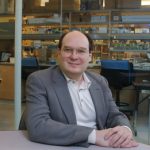 Jonathan Karn is the Reinberger Professor of Molecular Biology at Case Western Reserve University. His research focuses on defining the molecular basis for HIV silencing, the signaling pathways used to reactivate latent HIV, the impact of drugs of abuse on the creation and reactivation of the latent viral reservoir in microglial cells, and the development of novel therapeutic approaches to attacking HIV latency. Key questions about HIV silencing that remain to be answered include: What are the primary sequence triggers and mechanisms that induce silencing (i.e. protein repressors and/or viral-derived RNA)? What cellular pre-conditions lead to proviral silencing? Do similar silencing mechanisms operate in each of the cell types infected by HIV? How do drugs of abuse reactivate HIV? In partial answer to these questions they have demonstrated that distinct epigenetic silencing mechanisms lead to viral persistence in different cell types. The laboratory has developed an extensive network of collaborations with academic and pharmaceutical partners as part of our work on HIV eradication, and is a participant in the Martin Delaney Collaboratory of AIDS Researchers for Eradication (CARE), a network of twenty leading laboratories working on HIV eradication strategies, the amfAR Research Consortium on HIV Eradication (ARCHE), the HIV Reservoirs and Viral Eradication Transformative Science Group (TSG) of the AIDS Clinical Trials Group (ACTG) and is also working in close collaboration with Merck on identification of novel HIV therapeutics. Website: http://www.case.edu/med/microbio/karn.htm
Jonathan Karn is the Reinberger Professor of Molecular Biology at Case Western Reserve University. His research focuses on defining the molecular basis for HIV silencing, the signaling pathways used to reactivate latent HIV, the impact of drugs of abuse on the creation and reactivation of the latent viral reservoir in microglial cells, and the development of novel therapeutic approaches to attacking HIV latency. Key questions about HIV silencing that remain to be answered include: What are the primary sequence triggers and mechanisms that induce silencing (i.e. protein repressors and/or viral-derived RNA)? What cellular pre-conditions lead to proviral silencing? Do similar silencing mechanisms operate in each of the cell types infected by HIV? How do drugs of abuse reactivate HIV? In partial answer to these questions they have demonstrated that distinct epigenetic silencing mechanisms lead to viral persistence in different cell types. The laboratory has developed an extensive network of collaborations with academic and pharmaceutical partners as part of our work on HIV eradication, and is a participant in the Martin Delaney Collaboratory of AIDS Researchers for Eradication (CARE), a network of twenty leading laboratories working on HIV eradication strategies, the amfAR Research Consortium on HIV Eradication (ARCHE), the HIV Reservoirs and Viral Eradication Transformative Science Group (TSG) of the AIDS Clinical Trials Group (ACTG) and is also working in close collaboration with Merck on identification of novel HIV therapeutics. Website: http://www.case.edu/med/microbio/karn.htm
 Joe Keiper is Former Curator of Invertebrate Zoology and Director of Science, Cleveland Museum of Natural History. Joe Keiper focuses on insect biology and how this knowledge can help us use insects as 21st-Century tools. His work in wetlands documents the biodiversity that occurs there, but he strives to use insect morphology community composition as a means to determine ecosystem health. In Northeast Ohio, he utilizes fly maggots as forensic evidence during investigations into human death under mysterious or suspicious circumstances (forensic entomology). Dr. Keiper received his Ph.D. from Kent State University and had been head of the Department of Invertebrate Zoology since 2000.
Joe Keiper is Former Curator of Invertebrate Zoology and Director of Science, Cleveland Museum of Natural History. Joe Keiper focuses on insect biology and how this knowledge can help us use insects as 21st-Century tools. His work in wetlands documents the biodiversity that occurs there, but he strives to use insect morphology community composition as a means to determine ecosystem health. In Northeast Ohio, he utilizes fly maggots as forensic evidence during investigations into human death under mysterious or suspicious circumstances (forensic entomology). Dr. Keiper received his Ph.D. from Kent State University and had been head of the Department of Invertebrate Zoology since 2000.
 Laura Khan is a Research Scholar at Princeton University, holding a B.S. degree in nursing from UCLA, an M.D. from Mt. Sinai School of Medicine, a Master of Public Health from Columbia University and a Master of Public Policy from Princeton University. Before joining the Princeton University staff, she was managing physician for the New Jersey Department of Health and Senior Services, a medical officer for the Food and Drug Administration in Rockville, Maryland, an attending physician/educator at Prince George’s Hospital in Cheverly, Maryland and a staff physician at Gouverneur Hospital in New York, New York. Dr. Kahn is a fellow of the American College of Physicians (ACP) and is a recipient of the New Jersey Chapter’s Laureate Award. Website: https://www.princeton.edu/~lkahn/Site/Welcome.html
Laura Khan is a Research Scholar at Princeton University, holding a B.S. degree in nursing from UCLA, an M.D. from Mt. Sinai School of Medicine, a Master of Public Health from Columbia University and a Master of Public Policy from Princeton University. Before joining the Princeton University staff, she was managing physician for the New Jersey Department of Health and Senior Services, a medical officer for the Food and Drug Administration in Rockville, Maryland, an attending physician/educator at Prince George’s Hospital in Cheverly, Maryland and a staff physician at Gouverneur Hospital in New York, New York. Dr. Kahn is a fellow of the American College of Physicians (ACP) and is a recipient of the New Jersey Chapter’s Laureate Award. Website: https://www.princeton.edu/~lkahn/Site/Welcome.html
 Joe Koonce is a Professor Emeritus in Biology. He received his BA degree from Dartmouth College and MS and PhD degrees from the University of Wisconsin, Madison, in Zoology. While professor at Case Western Reserve University, he held a secondary appointment as professor in the Department of Electrical Engineering and Computer and Science. He joined the faculty of the Department of Biology at Case Western Reserve University in 1973 and served as Chair of the Department of Biology from 2000 to 2009. Dr. Koonce has broad research interests in aquatic systems ecology. He has served on a number of boards and advisory committees for the Great Lakes Fishery Commission, the International Joint Commission, National Research Council, and the U.S. Environmental Protection Agency. He served as the Ecosystem Partnership Coordinator for the Great Lakes Fishery Commission (1992–1993) and as U.S. cochair of the Habitat Advisory Board of the Great Lakes Fishery Commission (1997–1999). Dr. Koonce is the leader of the Lake Erie Ecological Modeling Project, and he is a member of the International Association of Great Lakes Research and the American Fisheries Society.
Joe Koonce is a Professor Emeritus in Biology. He received his BA degree from Dartmouth College and MS and PhD degrees from the University of Wisconsin, Madison, in Zoology. While professor at Case Western Reserve University, he held a secondary appointment as professor in the Department of Electrical Engineering and Computer and Science. He joined the faculty of the Department of Biology at Case Western Reserve University in 1973 and served as Chair of the Department of Biology from 2000 to 2009. Dr. Koonce has broad research interests in aquatic systems ecology. He has served on a number of boards and advisory committees for the Great Lakes Fishery Commission, the International Joint Commission, National Research Council, and the U.S. Environmental Protection Agency. He served as the Ecosystem Partnership Coordinator for the Great Lakes Fishery Commission (1992–1993) and as U.S. cochair of the Habitat Advisory Board of the Great Lakes Fishery Commission (1997–1999). Dr. Koonce is the leader of the Lake Erie Ecological Modeling Project, and he is a member of the International Association of Great Lakes Research and the American Fisheries Society.
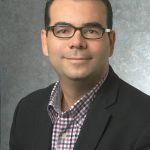 Mehmet Koyuturk is T & A Schroeder Associate Professor, Department of Electrical Engineering and Computer Science at Case Western Reserve University. He received his Ph.D. degree in Computer Science from Purdue University, and his B.S. and M.S. degrees from Bilkent University, respectively in Electrical Engineering and Computer Engineering. His research focuses on the analysis of biological networks, systems biology of complex diseases, and computational genomics. Mehmet also serves in the steering committee of CWRU’s graduate programs in Systems Biology and Bioinformatics and he is an associate editor for IEEE/ACM Transactions on Computational Biology and Bioinformatics (TCBB). Website: http://compbio.case.edu/koyuturk/
Mehmet Koyuturk is T & A Schroeder Associate Professor, Department of Electrical Engineering and Computer Science at Case Western Reserve University. He received his Ph.D. degree in Computer Science from Purdue University, and his B.S. and M.S. degrees from Bilkent University, respectively in Electrical Engineering and Computer Engineering. His research focuses on the analysis of biological networks, systems biology of complex diseases, and computational genomics. Mehmet also serves in the steering committee of CWRU’s graduate programs in Systems Biology and Bioinformatics and he is an associate editor for IEEE/ACM Transactions on Computational Biology and Bioinformatics (TCBB). Website: http://compbio.case.edu/koyuturk/
 Joseph LaManna is the Jeannette M. and Joseph S. Silber Professor for the Study of Brain Sciences Professor of Physiology & Biophysics, Neurology, Neurosciences, and Pathology. He received his undergraduate degree in Biology at Georgetown University in Washington, DC and a PhD in Physiology and Pharmacology from Duke University in Durham, NC. He has been the Faculty of the School of Medicine at Case Western Reserve University since 1981, and he is the former Chair of the Department of Anatomy at CWRU (1993-2008). He has been involved in cerebrovascular research for more than 40 years. Research conducted in his laboratory is concerned with energy demand, energy metabolism, and blood flow in the brain. The role of these mechanisms in the tissue response to pathological insults such as stroke, cardiac arrest and resuscitation, and hypoxia is being actively investigated. His most recent research has centered on cerebral angiogenesis and the role of hypoxia-inducible factor-1 in physiological adaptation to hypoxia, neuroprotection and ischemic preconditioning. He has authored or co-authored over 200 research papers and review chapters. He is a Past President of The Federation of American Societies for Experimental Biology (FASEB). Contact: joseph.lamanna@case.edu 216.368.1112, Website: http://physiology.case.edu/people/faculty/joseph-c-lamanna/
Joseph LaManna is the Jeannette M. and Joseph S. Silber Professor for the Study of Brain Sciences Professor of Physiology & Biophysics, Neurology, Neurosciences, and Pathology. He received his undergraduate degree in Biology at Georgetown University in Washington, DC and a PhD in Physiology and Pharmacology from Duke University in Durham, NC. He has been the Faculty of the School of Medicine at Case Western Reserve University since 1981, and he is the former Chair of the Department of Anatomy at CWRU (1993-2008). He has been involved in cerebrovascular research for more than 40 years. Research conducted in his laboratory is concerned with energy demand, energy metabolism, and blood flow in the brain. The role of these mechanisms in the tissue response to pathological insults such as stroke, cardiac arrest and resuscitation, and hypoxia is being actively investigated. His most recent research has centered on cerebral angiogenesis and the role of hypoxia-inducible factor-1 in physiological adaptation to hypoxia, neuroprotection and ischemic preconditioning. He has authored or co-authored over 200 research papers and review chapters. He is a Past President of The Federation of American Societies for Experimental Biology (FASEB). Contact: joseph.lamanna@case.edu 216.368.1112, Website: http://physiology.case.edu/people/faculty/joseph-c-lamanna/
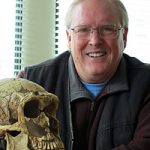 Bruce Latimer is CHO director and Professor of Anthropology, Anatomy, and Cognitive Science at Case Western Reserve University. As a physical anthropologist, he is internationally recognized as an expert on the evolution of human locomotion. His research has helped shape our present understanding of the evolutionary processes that led to the ability of humans to walk upright on two feet. Latimer is among a group of scientists who analyzed the famous 3.2 million-year-old “Lucy” fossil skeleton. In the fall of 2009, Latimer and other members of an international scientific team announced the discovery and identification of a new species of early human ancestor, Ardipithecus ramidus. In June, 2010, Latimer and and an international team of scientists announced the discovery and analysis of the oldest-known Australopithecus afarensis skeleton, which has led to the biggest leap forward in understanding this species since the initial “Lucy” discovery. This new and much larger male specimen is nicknamed “Kadanuumuu,” meaning “big man” in the Afar language. Contact: bruce.latimer@case.edu 216.531.8187 Website: http://anthropology.ua.edu/blogs/ltmonocello/2015/12/02/biography-bruce-latimer/
Bruce Latimer is CHO director and Professor of Anthropology, Anatomy, and Cognitive Science at Case Western Reserve University. As a physical anthropologist, he is internationally recognized as an expert on the evolution of human locomotion. His research has helped shape our present understanding of the evolutionary processes that led to the ability of humans to walk upright on two feet. Latimer is among a group of scientists who analyzed the famous 3.2 million-year-old “Lucy” fossil skeleton. In the fall of 2009, Latimer and other members of an international scientific team announced the discovery and identification of a new species of early human ancestor, Ardipithecus ramidus. In June, 2010, Latimer and and an international team of scientists announced the discovery and analysis of the oldest-known Australopithecus afarensis skeleton, which has led to the biggest leap forward in understanding this species since the initial “Lucy” discovery. This new and much larger male specimen is nicknamed “Kadanuumuu,” meaning “big man” in the Afar language. Contact: bruce.latimer@case.edu 216.531.8187 Website: http://anthropology.ua.edu/blogs/ltmonocello/2015/12/02/biography-bruce-latimer/
 Austin Leeds is pursuing his graduate studies under Dr. Kristen Lukas and conducting research at the Cleveland Metroparks Zoo. He is interested in primate social behavior and cognition, and how studying this in a zoo setting can influence animal welfare and management.
Austin Leeds is pursuing his graduate studies under Dr. Kristen Lukas and conducting research at the Cleveland Metroparks Zoo. He is interested in primate social behavior and cognition, and how studying this in a zoo setting can influence animal welfare and management.
 Jing Li is an Associate Professor in the Case Western Reserve University Electrical Engineering and Computer Science Department, with secondary appointments in the Epidemiology and Biostatistics department, Center for Proteomics and Bioinformatics, and the Case Comprehensive Cancer center. He is the director of the Computational Biology lab at Case (CBC), whose major research interests focus on the development of computational solutions for biologically motivated problems with high throughput data. Their research interests are in the areas of bioinformatics, and computational biology, statistical genomics, with a particular emphasis on the design and application of efficient combinatorial and statistical algorithms to challenging biological problems, and the development of user-friendly software tools. Current areas of research development include development of computational solutions for the analysis of human genomic variations, including haplotype inference based on family data, disease association mapping, structure variation and copy number variation detection, and rare variant identification using pooled samples. Read more at: https://sites.google.com/a/case.edu/jingli/home
Jing Li is an Associate Professor in the Case Western Reserve University Electrical Engineering and Computer Science Department, with secondary appointments in the Epidemiology and Biostatistics department, Center for Proteomics and Bioinformatics, and the Case Comprehensive Cancer center. He is the director of the Computational Biology lab at Case (CBC), whose major research interests focus on the development of computational solutions for biologically motivated problems with high throughput data. Their research interests are in the areas of bioinformatics, and computational biology, statistical genomics, with a particular emphasis on the design and application of efficient combinatorial and statistical algorithms to challenging biological problems, and the development of user-friendly software tools. Current areas of research development include development of computational solutions for the analysis of human genomic variations, including haplotype inference based on family data, disease association mapping, structure variation and copy number variation detection, and rare variant identification using pooled samples. Read more at: https://sites.google.com/a/case.edu/jingli/home
 Yu Liu is a Senior Research Associate at Case Western Reserve University in the Center for Proteomics and Bioinformatics. She holds a PhD in Bioinformatics, and has more than 10 years experience in developing bioinformatics and cheminformatics tools and analyzing “omics.” Website: https://www.linkedin.com/in/yu-liu-phd-74bb12b7
Yu Liu is a Senior Research Associate at Case Western Reserve University in the Center for Proteomics and Bioinformatics. She holds a PhD in Bioinformatics, and has more than 10 years experience in developing bioinformatics and cheminformatics tools and analyzing “omics.” Website: https://www.linkedin.com/in/yu-liu-phd-74bb12b7
 Bryan Lynn is a visiting professor of Physics at Case Western Reserve University. He is a theoretical physicist with interests in probing the depths of the Standard Model, “the most successful scientific theory known to mankind.” Prior to coming to Case, Lynn pursued his high-energy particle research interests at CERN in Geneva. Website: https://home.cern/
Bryan Lynn is a visiting professor of Physics at Case Western Reserve University. He is a theoretical physicist with interests in probing the depths of the Standard Model, “the most successful scientific theory known to mankind.” Prior to coming to Case, Lynn pursued his high-energy particle research interests at CERN in Geneva. Website: https://home.cern/
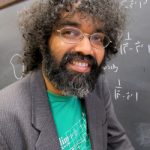 Harsh Mathur is professor of Physics at Case Western Reserve University. The main focus of his research has been condensed matter theory. A second area of interest is theoretical particle astrophysics and cosmology. In condensed matter physics my main interests are quantum many-body physics and quantum effects in disordered materials. In particle astrophysics and cosmology, he is interested in the early Universe as a probe of high energy physics, in the cosmic microwave background as a probe of the early Universe, and in non-perturbative phenomena in quantum field theory. Read more at: Website: http://physics.case.edu/faculty/harsh-mathur/
Harsh Mathur is professor of Physics at Case Western Reserve University. The main focus of his research has been condensed matter theory. A second area of interest is theoretical particle astrophysics and cosmology. In condensed matter physics my main interests are quantum many-body physics and quantum effects in disordered materials. In particle astrophysics and cosmology, he is interested in the early Universe as a probe of high energy physics, in the cosmic microwave background as a probe of the early Universe, and in non-perturbative phenomena in quantum field theory. Read more at: Website: http://physics.case.edu/faculty/harsh-mathur/
 Mike Martens is Professor of Physics at Case Western Reserve University. His concentrations comprise Medical Imaging Physics, Industrial Physics, Magnetic Nanoparticle Imaging, High Energy Particle Physics, and Accelerator Physics. Almost all of us have had (or will have) a medical imaging scan during our lifetime. This might be an X-ray to look for a broken bone, an MRI (Magnet Resonance Imaging) scan to look for tumors, or a PET (Positron Emission Tomography) scan that is part of a cancer treatment plan. Martens’ latest research involves understanding the physics principles used in these scanners and developing methods and instrumentation that will improve the quality of the images. Read more at: Website: http://physics.case.edu/faculty/michael-martens/
Mike Martens is Professor of Physics at Case Western Reserve University. His concentrations comprise Medical Imaging Physics, Industrial Physics, Magnetic Nanoparticle Imaging, High Energy Particle Physics, and Accelerator Physics. Almost all of us have had (or will have) a medical imaging scan during our lifetime. This might be an X-ray to look for a broken bone, an MRI (Magnet Resonance Imaging) scan to look for tumors, or a PET (Positron Emission Tomography) scan that is part of a cancer treatment plan. Martens’ latest research involves understanding the physics principles used in these scanners and developing methods and instrumentation that will improve the quality of the images. Read more at: Website: http://physics.case.edu/faculty/michael-martens/
 Peter McCall is director of the Environmental Studies Program. Professor of Earth, Environmental, and Planetary Sciences, he joined the faculty at Case Western Reserve University in 1974. He is a benthic ecologist who has worked on adaptive strategies of marine and freshwater benthos, pollution ecology, animal-sediment relations, and biological mixing of sediments. Dr. McCall is also interested in sediment transport and deposition, early evolution of the invertebrates, and in environmental law. He has developed a recent interest in developing computer models of complex biogeodynamic systems for teaching. Website: http://casfaculty.case.edu/peter-mccall/
Peter McCall is director of the Environmental Studies Program. Professor of Earth, Environmental, and Planetary Sciences, he joined the faculty at Case Western Reserve University in 1974. He is a benthic ecologist who has worked on adaptive strategies of marine and freshwater benthos, pollution ecology, animal-sediment relations, and biological mixing of sediments. Dr. McCall is also interested in sediment transport and deposition, early evolution of the invertebrates, and in environmental law. He has developed a recent interest in developing computer models of complex biogeodynamic systems for teaching. Website: http://casfaculty.case.edu/peter-mccall/
 Stacy McGaugh is a professor in the Case Western Reserve University Department of Astronomy. Professor Stacy McGaugh is an astronomer who studies galaxies, dark matter, and theories of modified gravity. He is an expert on low surface brightness galaxies, a class of objects in which the stars are spread thin compared to bright galaxies like our own Milky Way. He demonstrated that these dim galaxies appear to be dark matter dominated, providing unique tests of theories of galaxy formation and modified gravity. McGaugh studied at MIT, Princeton, and the University of Michigan. McGaugh was a research fellow at the Institute of Astronomy at the University of Cambridge, the Department of Terrestrial Magnetism of the Carnegie Institution of Washington, and Rutgers before joining the faculty of the University of Maryland in 1998. In 2012, he moved to Case Western Reserve University where he is currently the Chair of the Department of Astronomy and Director of the Warner and Swasey Observatory. Website: http://astroweb.case.edu/ssm/
Stacy McGaugh is a professor in the Case Western Reserve University Department of Astronomy. Professor Stacy McGaugh is an astronomer who studies galaxies, dark matter, and theories of modified gravity. He is an expert on low surface brightness galaxies, a class of objects in which the stars are spread thin compared to bright galaxies like our own Milky Way. He demonstrated that these dim galaxies appear to be dark matter dominated, providing unique tests of theories of galaxy formation and modified gravity. McGaugh studied at MIT, Princeton, and the University of Michigan. McGaugh was a research fellow at the Institute of Astronomy at the University of Cambridge, the Department of Terrestrial Magnetism of the Carnegie Institution of Washington, and Rutgers before joining the faculty of the University of Maryland in 1998. In 2012, he moved to Case Western Reserve University where he is currently the Chair of the Department of Astronomy and Director of the Warner and Swasey Observatory. Website: http://astroweb.case.edu/ssm/
 Colin McLarty is the Truman P. Handy Professor of Philosophy at Case Western Reserve University. He holds Ph.D., M.A., Philosophy, Case Western Reserve University
Colin McLarty is the Truman P. Handy Professor of Philosophy at Case Western Reserve University. He holds Ph.D., M.A., Philosophy, Case Western Reserve University
and a B.S. in Mathematics, Case Institute of Technology. His research concentrates on logic, philosophy of logic, philosophy of mathematics, philosophy of science, and contemporary French philosophy. You may find recent and past talks at his website, http://philosophy.case.edu/faculty/colin-mclarty/
 Chris Mihos has been Professor of Astronomy at Case Western Reserve University since 2006. His research interests include galaxy formation and evolution, galaxy clusters, galactic dynamics, and observational and computational astronomy. He uses observational data from ground- and space-based telescopes combined with start-of-the-art computer modeling to study the evolution of galaxies and galaxy clusters. He also has been using CWRU’s wide-field Burrell Schmidt telescope to survey the nearby Virgo cluster of galaxies for the ghostly intracluster light that traces the history of galaxy collisions inside the cluster. He is a member of the Next Generation Virgo Cluster Survey team, an international project studying the structure and evolution of galaxies within Virgo. Other observational projects of mine include deep multi-wavelength studies of the faint outskirts of nearby galaxies to probe their assembly history, star forming properties, and stellar populations. Website: http://burro.astr.cwru.edu/
Chris Mihos has been Professor of Astronomy at Case Western Reserve University since 2006. His research interests include galaxy formation and evolution, galaxy clusters, galactic dynamics, and observational and computational astronomy. He uses observational data from ground- and space-based telescopes combined with start-of-the-art computer modeling to study the evolution of galaxies and galaxy clusters. He also has been using CWRU’s wide-field Burrell Schmidt telescope to survey the nearby Virgo cluster of galaxies for the ghostly intracluster light that traces the history of galaxy collisions inside the cluster. He is a member of the Next Generation Virgo Cluster Survey team, an international project studying the structure and evolution of galaxies within Virgo. Other observational projects of mine include deep multi-wavelength studies of the faint outskirts of nearby galaxies to probe their assembly history, star forming properties, and stellar populations. Website: http://burro.astr.cwru.edu/
 Claudia Mieko Mizutani is an associate professor in the Case Western Reserve Department of Biology. Mieko received her PhD at the Biophysics Institute Carlos Chagas Filho at the Federal University of Rio de Janeiro, Brazil. She did her postdoctoral research at the University of California, San Diego, CA. She joined Case in 2009 as an Assistant Professor at Biology. Her lab is interested in understanding the developmental mechanisms of evolutionary change in body plan patterns. Using the fruit fly, Drosophila melanogaster and its closely related species to study how embryonic germ layers and morphogenetic gradients were modified during evolution. Additionally, they perform genome-wide screenings to identify genes involved in other aspects of phenotypic differentiation in the sibling species D. melanogaster, D. simulans and D. sechellia, in particular: myogenesis, neuromuscular junction formation, locomotion, and germline specification. Website: https://sites.google.com/site/mizutaniwebpage/
Claudia Mieko Mizutani is an associate professor in the Case Western Reserve Department of Biology. Mieko received her PhD at the Biophysics Institute Carlos Chagas Filho at the Federal University of Rio de Janeiro, Brazil. She did her postdoctoral research at the University of California, San Diego, CA. She joined Case in 2009 as an Assistant Professor at Biology. Her lab is interested in understanding the developmental mechanisms of evolutionary change in body plan patterns. Using the fruit fly, Drosophila melanogaster and its closely related species to study how embryonic germ layers and morphogenetic gradients were modified during evolution. Additionally, they perform genome-wide screenings to identify genes involved in other aspects of phenotypic differentiation in the sibling species D. melanogaster, D. simulans and D. sechellia, in particular: myogenesis, neuromuscular junction formation, locomotion, and germline specification. Website: https://sites.google.com/site/mizutaniwebpage/
 Carol Musil is the Marvin E. & Ruth Durr Denekas Professor of Nursing at the Frances Payne Bolton School of Nursing. Her research focuses on the stress and health of middle aged and older community dwelling adults, primarily women and caregivers, and development of self-management interventions to support them, particularly during times of strain and transition. Currently, she is also Pilot Core Director of CWRU’s SMART (Self-Management Advancement through Research and Training: Brain-Behavior Connections) Center at Case Western University, where investigators are evaluating the neurologic, psychosocial and physical effects of cognitive-behavioral and mindfulness interventions to support illness self-management. Contact: cmm4@cwru.edu 216.368.8775, Website: https://nursing.case.edu/about/directories/faculty/musil/
Carol Musil is the Marvin E. & Ruth Durr Denekas Professor of Nursing at the Frances Payne Bolton School of Nursing. Her research focuses on the stress and health of middle aged and older community dwelling adults, primarily women and caregivers, and development of self-management interventions to support them, particularly during times of strain and transition. Currently, she is also Pilot Core Director of CWRU’s SMART (Self-Management Advancement through Research and Training: Brain-Behavior Connections) Center at Case Western University, where investigators are evaluating the neurologic, psychosocial and physical effects of cognitive-behavioral and mindfulness interventions to support illness self-management. Contact: cmm4@cwru.edu 216.368.8775, Website: https://nursing.case.edu/about/directories/faculty/musil/
 Isaiah Nengo is Associate Director of the Turkana Basin Institute. He holds an MA, and a Ph.D. in Biological Anthropology from Harvard University, and a B.Sc., in Zoology and Botany, Nairobi University, in his native Kenya. His main research interest is the study of ape and human evolution, and his primary focus is to document origins of the ape lineage, the evolutionary roots of the human lineage, and the adaptive emergence of human bipedalism, in the fossil record of the Miocene, approximately 25 to 5 million years, in Africa. He conducts his paleontological field research is at sites in the Lake Victoria and Lake Turkana basins in Kenya. Contact: isaiah.nengo@stonybrook.edu,
Isaiah Nengo is Associate Director of the Turkana Basin Institute. He holds an MA, and a Ph.D. in Biological Anthropology from Harvard University, and a B.Sc., in Zoology and Botany, Nairobi University, in his native Kenya. His main research interest is the study of ape and human evolution, and his primary focus is to document origins of the ape lineage, the evolutionary roots of the human lineage, and the adaptive emergence of human bipedalism, in the fossil record of the Miocene, approximately 25 to 5 million years, in Africa. He conducts his paleontological field research is at sites in the Lake Victoria and Lake Turkana basins in Kenya. Contact: isaiah.nengo@stonybrook.edu,
 Rui Sousa Neves is a research scientist in the department of Genetics and Genome Sciences at Case Western Reserve University.
Rui Sousa Neves is a research scientist in the department of Genetics and Genome Sciences at Case Western Reserve University.
Website: http://genetics.case.edu/page.php?page_id=101&gkey=5
 Ronald Oldfield is a senior instructor in the Department of Biology at Case Western Reserve University. Broadly stated, the goal of his research is to study the origin and conservation of biodiversity. He studies the evolution of social behavior, with a focus on mating systems. Why do some males and females form monogamous social bonds to care for their offspring, whereas others might try to mate with as many partners as possible? He uses cichlid fishes from Central America as a model system to answer this question. Using the knowledge of the evolutionary relationships among species, it is possible to identify the causes and mechanisms underlying evolutionary transitions in behavior. Methods currently used involve behavior, ecology, anatomy, endocrinology, and systematics and taxonomy. The research justifies the conservation of threatened fish species and their habitats. Also, monogamy and polygamy are issues that humans struggle with in their everyday lives, so the research has important implications beyond fish conservation. Oldfield also studies behavioral ecology of local Ohio fishes in order to contribute to the conservation of native biodiversity. Website: http://biology.case.edu/faculty/ronald-oldfield/
Ronald Oldfield is a senior instructor in the Department of Biology at Case Western Reserve University. Broadly stated, the goal of his research is to study the origin and conservation of biodiversity. He studies the evolution of social behavior, with a focus on mating systems. Why do some males and females form monogamous social bonds to care for their offspring, whereas others might try to mate with as many partners as possible? He uses cichlid fishes from Central America as a model system to answer this question. Using the knowledge of the evolutionary relationships among species, it is possible to identify the causes and mechanisms underlying evolutionary transitions in behavior. Methods currently used involve behavior, ecology, anatomy, endocrinology, and systematics and taxonomy. The research justifies the conservation of threatened fish species and their habitats. Also, monogamy and polygamy are issues that humans struggle with in their everyday lives, so the research has important implications beyond fish conservation. Oldfield also studies behavioral ecology of local Ohio fishes in order to contribute to the conservation of native biodiversity. Website: http://biology.case.edu/faculty/ronald-oldfield/
 Thomas Orlando is a professor of Chemistry and Biochemistry at Georgia Tech University. Dr. Orlando’s group ‘s interests lie in electron and photon stimulated interface and surface processes. He utilizes state-of-the-art ultra-high vacuum (UHV) surface science systems equipped with UV-laser sources and low-energy electron beams to stimulate reactions (such as the production of hydrogen) on a variety of substrates and interfaces. Sensitive laser detection schemes (resonance-enhanced multiphoton ionization) are used to probe the reaction dynamics. Approaches based on quantum mechanical interference to control desorption and patterning of surfaces at the nano- and meso-scale are also being developed. In environmental chemistry and planetary surface science, Dr. Orlando’s group studies “wet” interfaces using nanoscale films of ice grown in UHV. Radical and ion-molecule reactions are then initiated using electron- and photon-beam sources. These experiments are relevant to understanding the photochemistry of stratospheric cloud particles and magnetospheric processing of icy satellite surfaces in the Jovian system. http://www.chemistry.gatech.edu/faculty/orlando/
Thomas Orlando is a professor of Chemistry and Biochemistry at Georgia Tech University. Dr. Orlando’s group ‘s interests lie in electron and photon stimulated interface and surface processes. He utilizes state-of-the-art ultra-high vacuum (UHV) surface science systems equipped with UV-laser sources and low-energy electron beams to stimulate reactions (such as the production of hydrogen) on a variety of substrates and interfaces. Sensitive laser detection schemes (resonance-enhanced multiphoton ionization) are used to probe the reaction dynamics. Approaches based on quantum mechanical interference to control desorption and patterning of surfaces at the nano- and meso-scale are also being developed. In environmental chemistry and planetary surface science, Dr. Orlando’s group studies “wet” interfaces using nanoscale films of ice grown in UHV. Radical and ion-molecule reactions are then initiated using electron- and photon-beam sources. These experiments are relevant to understanding the photochemistry of stratospheric cloud particles and magnetospheric processing of icy satellite surfaces in the Jovian system. http://www.chemistry.gatech.edu/faculty/orlando/
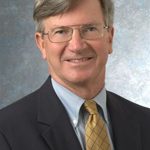 Hunter Peckham is the Executive Director of the Cleveland FES Center and professor of Biomedical Engineering and Orthopaedics at Case Western Reserve University’s School of Medicine. His research activities focus on FES systems for control of the extremity including acquisition of myoelectric control information, activation and coordination of multiple muscles to produce synthesized movement, and sensory feedback. Additionally, Peckham works on implantable FES systems including sensors, telemetry, stimulators and electrodes, and also performs evaluation of neuroprostheses supplying upper extremity function in human subjects. Website: http://fescenter.org/about-fes-center/who-we-are/investigators/hunter-p-peckham-phd/
Hunter Peckham is the Executive Director of the Cleveland FES Center and professor of Biomedical Engineering and Orthopaedics at Case Western Reserve University’s School of Medicine. His research activities focus on FES systems for control of the extremity including acquisition of myoelectric control information, activation and coordination of multiple muscles to produce synthesized movement, and sensory feedback. Additionally, Peckham works on implantable FES systems including sensors, telemetry, stimulators and electrodes, and also performs evaluation of neuroprostheses supplying upper extremity function in human subjects. Website: http://fescenter.org/about-fes-center/who-we-are/investigators/hunter-p-peckham-phd/
 Pavel Fileviez Perez is an Assistant Professor in the Case Western Reserve University department of Physics and CERCA. His main research interests include particle physics and cosmology, physics beyond the Standard Model, dark matter in the universe, and New Physics at the Large Hadron Collider (LHC). Recently he has been named chairman of the International Symposium on Particles, Strings and Cosmology (PASCOS2018), Cleveland, June 4-8, 2018, convener of the particle physics session, 2017 TeV Particle Astrophysics conference (TeVPA 2017), Columbus, Ohio, USA. and chairman of the 2017 International Workshop on Lepton and Baryon Number Violation (BLV2017), Case Western Reserve University, Cleveland, OH, USA.
Pavel Fileviez Perez is an Assistant Professor in the Case Western Reserve University department of Physics and CERCA. His main research interests include particle physics and cosmology, physics beyond the Standard Model, dark matter in the universe, and New Physics at the Large Hadron Collider (LHC). Recently he has been named chairman of the International Symposium on Particles, Strings and Cosmology (PASCOS2018), Cleveland, June 4-8, 2018, convener of the particle physics session, 2017 TeV Particle Astrophysics conference (TeVPA 2017), Columbus, Ohio, USA. and chairman of the 2017 International Workshop on Lepton and Baryon Number Violation (BLV2017), Case Western Reserve University, Cleveland, OH, USA.
 Patricia Princehouse is Director of the Program in Evolutionary Biology, and outreach director for the Institute for the Science of Origins. Patricia Princehouse is an evolutionary biologist and historian of science. She earned her masters from Yale and a PhD from Harvard, where she worked with Stephen Jay Gould and Richard Lewontin. She has conducted fieldwork on primate evolution in Africa and North America, and also has research interests in what artificial life and digital organisms can tell us about patterns and processes of evolution. Princehouse grew up on a farm near Dayton, Ohio, and has always had a keen interest in the natural world, especially animals, and is a breeder of top show, performance and working Pyrenean Shepherd dogs, and occasionally sheep, goats and horses. Princehouse has received many teaching awards, and in 2003 was honored by the National Center for Science Education’s “Friend of Darwin” award for helping preserve the integrity of Ohio’s public school science curriculum. She is currently working on a book titled Can Evolution Help You Choose a Puppy?. Contact: patricia.princehouse@case.edu, 440.478.5292
Patricia Princehouse is Director of the Program in Evolutionary Biology, and outreach director for the Institute for the Science of Origins. Patricia Princehouse is an evolutionary biologist and historian of science. She earned her masters from Yale and a PhD from Harvard, where she worked with Stephen Jay Gould and Richard Lewontin. She has conducted fieldwork on primate evolution in Africa and North America, and also has research interests in what artificial life and digital organisms can tell us about patterns and processes of evolution. Princehouse grew up on a farm near Dayton, Ohio, and has always had a keen interest in the natural world, especially animals, and is a breeder of top show, performance and working Pyrenean Shepherd dogs, and occasionally sheep, goats and horses. Princehouse has received many teaching awards, and in 2003 was honored by the National Center for Science Education’s “Friend of Darwin” award for helping preserve the integrity of Ohio’s public school science curriculum. She is currently working on a book titled Can Evolution Help You Choose a Puppy?. Contact: patricia.princehouse@case.edu, 440.478.5292
 John Protasiewicz is Professor, and Associate Department Chair in the Case Western Reserve University Department of Chemistry. His research group focuses on inorganic, organometallic, and main group chemistry, “because there’s so much more than carbon and hydrogen.” Current interests include the construction of conjugated materials that incorporate multiply bonded low coordinate main group elements, in particular, phosphorus. Many fascinating and technologically important polymers having backbones comprised of C=C units in a conjugated fashion, and such materials are being intensely studied for electronic and optical properties in areas such as organic light emitting diodes (OLEDs) and organic solar photovoltaics (PVs). Using the well-known diagonal relationship between carbon and phosphorus, one of his lab’s goals is to prepare new materials having having P=C and P=P double bonds along the conjugation pathway. Website: http://caslabs.case.edu/protasiewicz/
John Protasiewicz is Professor, and Associate Department Chair in the Case Western Reserve University Department of Chemistry. His research group focuses on inorganic, organometallic, and main group chemistry, “because there’s so much more than carbon and hydrogen.” Current interests include the construction of conjugated materials that incorporate multiply bonded low coordinate main group elements, in particular, phosphorus. Many fascinating and technologically important polymers having backbones comprised of C=C units in a conjugated fashion, and such materials are being intensely studied for electronic and optical properties in areas such as organic light emitting diodes (OLEDs) and organic solar photovoltaics (PVs). Using the well-known diagonal relationship between carbon and phosphorus, one of his lab’s goals is to prepare new materials having having P=C and P=P double bonds along the conjugation pathway. Website: http://caslabs.case.edu/protasiewicz/
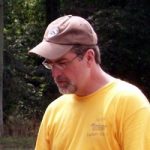 Brian G. Redmond is Curator and John Otis Hower Chair of Archaeology at the Cleveland Museum of Natural History and Adjunct Associate Professor in the Department of Anthropology, CWRU. His research focuses on the archaeology and prehistory of pre-European contact Native American societies in the Midwest of North America. Major research interests include the development of settled village life and community organization in the lower Great Lakes, the origin of maize agriculture, and Paleoindian bone modification. Contact: BRedmond@cmnh.org 216.231.4600, x3301 Website: https://www.cmnh.org/c-r/archaeology.
Brian G. Redmond is Curator and John Otis Hower Chair of Archaeology at the Cleveland Museum of Natural History and Adjunct Associate Professor in the Department of Anthropology, CWRU. His research focuses on the archaeology and prehistory of pre-European contact Native American societies in the Midwest of North America. Major research interests include the development of settled village life and community organization in the lower Great Lakes, the origin of maize agriculture, and Paleoindian bone modification. Contact: BRedmond@cmnh.org 216.231.4600, x3301 Website: https://www.cmnh.org/c-r/archaeology.
 Jeremy Rich is Staff at the Lerner Research Institute of the Cleveland Clinic. He is a renowned researcher who investigates cancer stem cells in brain tumors and novel treatments aimed at slowing brain tumor growth, and is the Chair of the Cleveland Clinic Lerner Research Institute’s Department of Stem Cell Biology and Regenerative Medicine. Dr. Rich will be recruiting about 10 new Faculty over the next five years to build a department with about 100 new employees. Dr. Rich was recruited from Duke University Medical Center in Durham, NC, where he was Associate Professor in the Department of Medicine’s Division of Neurology, Associate Professor in the Department of Pharmacology and Cancer Biology, and Associate Professor in the Department of Surgery. Dr. Rich received his medical degree from the Duke University School of Medicine, and had clinical training in neurology at Johns Hopkins University. Website: https://www.lerner.ccf.org/stemcellbio/rich.
Jeremy Rich is Staff at the Lerner Research Institute of the Cleveland Clinic. He is a renowned researcher who investigates cancer stem cells in brain tumors and novel treatments aimed at slowing brain tumor growth, and is the Chair of the Cleveland Clinic Lerner Research Institute’s Department of Stem Cell Biology and Regenerative Medicine. Dr. Rich will be recruiting about 10 new Faculty over the next five years to build a department with about 100 new employees. Dr. Rich was recruited from Duke University Medical Center in Durham, NC, where he was Associate Professor in the Department of Medicine’s Division of Neurology, Associate Professor in the Department of Pharmacology and Cancer Biology, and Associate Professor in the Department of Surgery. Dr. Rich received his medical degree from the Duke University School of Medicine, and had clinical training in neurology at Johns Hopkins University. Website: https://www.lerner.ccf.org/stemcellbio/rich.
 John Ruhl is Professor of Physics and Astronomy at Case Western Reserve University. As an experimental cosmologist, his interests include the Cosmic Microwave Background Radiation (CMB), which he probes for an enormous amount of information about the universe at a redshift z = 1,000, a few hundred thousand years after the big bang. Furthermore, the CMB can be used as a “backlight” to learn more about the lower redshift universe. Studies of the CMB can answer many fundamental questions about the nature of the universe. Currently, his research group is working on two projects to explore the properties of the CMB. SPIDER is a balloon-borne instrument that will measure the polarization on large angular scales; in addition to learning more about the reionization epoch of the universe (near z=10), the ultimate goal of SPIDER is to detect the unique pattern of polarization that would be imprinted by gravity waves created during Inflation, when the universe was only 10-34 (or so!) seconds old. Their other main project is the South Pole Telescope, which is a 10m diameter telescope located at the South Pole. We are currently observing with a camera that is optimized to look for clusters of galaxies via the Sunyaev-Zeldovich effect (using the CMB as a “backlight”), and to characterize the temperature variations of the CMB on very small angular scales (down to 1 arcminute). These observations tell us about the history of structure formation in the universe, and hopefully more about the nature of Dark Energy. Contact: ruhl@cwru.edu 216.368.4049 Website: http://www.phys.cwru.edu/sites/johnruhl/
John Ruhl is Professor of Physics and Astronomy at Case Western Reserve University. As an experimental cosmologist, his interests include the Cosmic Microwave Background Radiation (CMB), which he probes for an enormous amount of information about the universe at a redshift z = 1,000, a few hundred thousand years after the big bang. Furthermore, the CMB can be used as a “backlight” to learn more about the lower redshift universe. Studies of the CMB can answer many fundamental questions about the nature of the universe. Currently, his research group is working on two projects to explore the properties of the CMB. SPIDER is a balloon-borne instrument that will measure the polarization on large angular scales; in addition to learning more about the reionization epoch of the universe (near z=10), the ultimate goal of SPIDER is to detect the unique pattern of polarization that would be imprinted by gravity waves created during Inflation, when the universe was only 10-34 (or so!) seconds old. Their other main project is the South Pole Telescope, which is a 10m diameter telescope located at the South Pole. We are currently observing with a camera that is optimized to look for clusters of galaxies via the Sunyaev-Zeldovich effect (using the CMB as a “backlight”), and to characterize the temperature variations of the CMB on very small angular scales (down to 1 arcminute). These observations tell us about the history of structure formation in the universe, and hopefully more about the nature of Dark Energy. Contact: ruhl@cwru.edu 216.368.4049 Website: http://www.phys.cwru.edu/sites/johnruhl/
 Steve Rissing is a professor in the Department of Evolution, Ecology, and Organismal Biology at Ohio State University. He holds a BS in Biology from Indiana University, and a Ph. D. from the University of Washington. His areas of expertise include ant evolution and ecology, and his current research focuses on the evolution of cooperation in starting ant colonies through selection above the level of the individual. He is also interested in effective science education with focus on evolution and undergraduate students, and the application of evolutionary science insights in public policy formation. Website: https://eeob.osu.edu/people/rissing.2
Steve Rissing is a professor in the Department of Evolution, Ecology, and Organismal Biology at Ohio State University. He holds a BS in Biology from Indiana University, and a Ph. D. from the University of Washington. His areas of expertise include ant evolution and ecology, and his current research focuses on the evolution of cooperation in starting ant colonies through selection above the level of the individual. He is also interested in effective science education with focus on evolution and undergraduate students, and the application of evolutionary science insights in public policy formation. Website: https://eeob.osu.edu/people/rissing.2
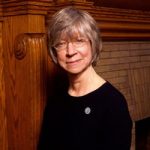 Sandra Russ is a Distinguished University Professor, and is the Louis D. Beaumont Professor in the Department of Psychological Sciences at Case Western Reserve University. Her research has focused on understanding how pretend play is involved in child development and in child psychotherapy. She has worked with my students to develop a measure of pretend play that assesses both cognitive and affective processes. Her group has also carried-out a number of studies that have investigated the relationship between pretend play and areas of adaptive functioning such as creativity, coping, and emotional understanding. In addition, they have developed play intervention procedures to help children improve their play skills. She and her colleagues are now investigating the facilitation of play in clinical populations. They have a brief behavior rating system that assesses play and we are validating that measure with clinical populations. A broad question that she has also worked on and written about is how affect is involved in the creative process. Website: http://psychsciences.case.edu/faculty/sandra-russ/
Sandra Russ is a Distinguished University Professor, and is the Louis D. Beaumont Professor in the Department of Psychological Sciences at Case Western Reserve University. Her research has focused on understanding how pretend play is involved in child development and in child psychotherapy. She has worked with my students to develop a measure of pretend play that assesses both cognitive and affective processes. Her group has also carried-out a number of studies that have investigated the relationship between pretend play and areas of adaptive functioning such as creativity, coping, and emotional understanding. In addition, they have developed play intervention procedures to help children improve their play skills. She and her colleagues are now investigating the facilitation of play in clinical populations. They have a brief behavior rating system that assesses play and we are validating that measure with clinical populations. A broad question that she has also worked on and written about is how affect is involved in the creative process. Website: http://psychsciences.case.edu/faculty/sandra-russ/
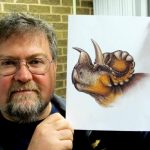 Michael Ryan is Curator and Head of Vertebrate Paleontology, Cleveland Museum of Natural History. Michael Ryan’s research interests are primarily in the description of new species of ceratopsian (horned) dinosaurs, and the documentation of their diversity and biology as seen in the fossil record. He works on the paleoecology and paleobiogeography of the Late Cretaceous dinosaur fauna of the western interior of North America, and also conducts expeditions to the Gobi Desert of Mongolia. Dr. Ryan has been head of the Vertebrate Paleontology department at CMNH since 2004, and received his Ph.D. from the University of Calgary. Contact: mryan@cmnh.org; 216-231-4600 x3246 Website: https://www.cmnh.org/ryan
Michael Ryan is Curator and Head of Vertebrate Paleontology, Cleveland Museum of Natural History. Michael Ryan’s research interests are primarily in the description of new species of ceratopsian (horned) dinosaurs, and the documentation of their diversity and biology as seen in the fossil record. He works on the paleoecology and paleobiogeography of the Late Cretaceous dinosaur fauna of the western interior of North America, and also conducts expeditions to the Gobi Desert of Mongolia. Dr. Ryan has been head of the Vertebrate Paleontology department at CMNH since 2004, and received his Ph.D. from the University of Calgary. Contact: mryan@cmnh.org; 216-231-4600 x3246 Website: https://www.cmnh.org/ryan
 Nita Sahai is a Professor in Department of Polymer Science at the University of Akron. Professor Nita Sahai has been in the Department of Polymer Science, University of Akron since August 2011. Prior to this, she obtained tenure and was a Full Professor in the Department of Geoscience, University of Wisconsin-Madison for 11 years. Prof. Sahai’s research focuses on the physical- chemical aspects of cellular and biomolecular interactions at composite biomaterials or mineral surfaces, in processes relevant to bone biomineralization, bone tissue engineering, and the origin and early evolution of life. Her current and former research is supported by NSF, NASA, ACS-PRF and the Simons Foundation, NY. Prof. Sahai is currently serving on the Editorial board of Geochimica et Cosmochimica Acta, the flagship journal in geochemistry, and has served previously on the Editorial boards of the journals, American Mineralogist and Geochemical Transactions. She has edited Medical Mineralogy and Geochemistry, volume 64 of the Reviews in Mineralogy and Geochemistry Series as well as the Medical Mineralogy and Geochemistry thematic issue of Elements magazine. Prof. Sahai has been interviewed on the U.S. National Public Radio on the program, “To The Best of Our Knowledge,” and on Hungarian National Television News, and her research was reported on in the most widely circulated newspaper in Hungary. Prof. Sahai has received the NSF Post-Doctoral Fellowship, the NSF CAREER award, the Romnes Faculty Fellowship from the University of Wisconsin-Madison, is the Ohio Research Scholar in Biomaterials at University of Akron, a Fellow of the Mineralogical Society of America and is the Distinguished Lecturer of the Mineralogical Society of America for 2013-2014. Contact: sahai@uakron.edu 330.972.5795, Website: http://biomin.uakron.edu/
Nita Sahai is a Professor in Department of Polymer Science at the University of Akron. Professor Nita Sahai has been in the Department of Polymer Science, University of Akron since August 2011. Prior to this, she obtained tenure and was a Full Professor in the Department of Geoscience, University of Wisconsin-Madison for 11 years. Prof. Sahai’s research focuses on the physical- chemical aspects of cellular and biomolecular interactions at composite biomaterials or mineral surfaces, in processes relevant to bone biomineralization, bone tissue engineering, and the origin and early evolution of life. Her current and former research is supported by NSF, NASA, ACS-PRF and the Simons Foundation, NY. Prof. Sahai is currently serving on the Editorial board of Geochimica et Cosmochimica Acta, the flagship journal in geochemistry, and has served previously on the Editorial boards of the journals, American Mineralogist and Geochemical Transactions. She has edited Medical Mineralogy and Geochemistry, volume 64 of the Reviews in Mineralogy and Geochemistry Series as well as the Medical Mineralogy and Geochemistry thematic issue of Elements magazine. Prof. Sahai has been interviewed on the U.S. National Public Radio on the program, “To The Best of Our Knowledge,” and on Hungarian National Television News, and her research was reported on in the most widely circulated newspaper in Hungary. Prof. Sahai has received the NSF Post-Doctoral Fellowship, the NSF CAREER award, the Romnes Faculty Fellowship from the University of Wisconsin-Madison, is the Ohio Research Scholar in Biomaterials at University of Akron, a Fellow of the Mineralogical Society of America and is the Distinguished Lecturer of the Mineralogical Society of America for 2013-2014. Contact: sahai@uakron.edu 330.972.5795, Website: http://biomin.uakron.edu/
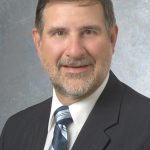 Robert Savinell is the George S. Dively Professor of Engineering at Case Western Reserve University. The overarching goals of his research program are to create electrochemical solutions to energy conversion, energy conservation, and energy storage challenges, including related environmental challenges of significance to industry and society, and to improve performance of electrochemical technologies in practice. His research focuses on understanding the thermodynamic, kinetic, and transport processes at electrochemical interfaces and within electrochemical systems through experimental and simulation approaches. The scope of the research program spans fundamental investigations through translational research towards commercial application. On-going projects include designing novel electrode structures to increase the plating capacity for hybrid flow batteries, understanding conductivity and transport properties of slurry electrodes and the design factors for applications in flow batteries, flow electrochemical capacitors, and flow capacitance separation devices, exploring new chemistries, electrolytes and materials for flow batteries and electrochemical capacitors, developing tools and analysis to study performance issues in electrochemical devices, and to measure fundamental transport and kinetic properties of materials under realistic operating conditions, and investigations leading to the understanding of proton conductivity and stability limits of high temperature polymer electrolytes such as the water-less PBI/phosphoric acid system. Website: http://engineering.case.edu/profiles/rfs2
Robert Savinell is the George S. Dively Professor of Engineering at Case Western Reserve University. The overarching goals of his research program are to create electrochemical solutions to energy conversion, energy conservation, and energy storage challenges, including related environmental challenges of significance to industry and society, and to improve performance of electrochemical technologies in practice. His research focuses on understanding the thermodynamic, kinetic, and transport processes at electrochemical interfaces and within electrochemical systems through experimental and simulation approaches. The scope of the research program spans fundamental investigations through translational research towards commercial application. On-going projects include designing novel electrode structures to increase the plating capacity for hybrid flow batteries, understanding conductivity and transport properties of slurry electrodes and the design factors for applications in flow batteries, flow electrochemical capacitors, and flow capacitance separation devices, exploring new chemistries, electrolytes and materials for flow batteries and electrochemical capacitors, developing tools and analysis to study performance issues in electrochemical devices, and to measure fundamental transport and kinetic properties of materials under realistic operating conditions, and investigations leading to the understanding of proton conductivity and stability limits of high temperature polymer electrolytes such as the water-less PBI/phosphoric acid system. Website: http://engineering.case.edu/profiles/rfs2
 Beverly Saylor is an Associate Professor in Statigraphy and Sedimentology at Case Western Reserve University. Her research examines sedimentary rocks and sediments as records of environmental change and as vessels that contain and react with fluids. She uses sedimentary and stratigraphic analysis, mapping, geochemical properties, and relative and absolute dating to investigate how climate, tectonics, volcanism, ocean processes and sea level influence sedimentary basins. Part of her research involves collaborations with paleontologists to determine the age and distribution of fossils in these basins, their paleoecological context and evolutionary history. The processes that control deposition also determine the mechanical behavior of sedimentary layers and the flow and reaction of fluids within their pore spaces. I work to characterize these heterogeneous physical properties in the field and in the subsurface, and I use simple models of these systems in numerical and laboratory experiments to constrain processes of reaction and transport critical to a broad range of environmental problems. Website: http://casfaculty.case.edu/beverly-saylor/
Beverly Saylor is an Associate Professor in Statigraphy and Sedimentology at Case Western Reserve University. Her research examines sedimentary rocks and sediments as records of environmental change and as vessels that contain and react with fluids. She uses sedimentary and stratigraphic analysis, mapping, geochemical properties, and relative and absolute dating to investigate how climate, tectonics, volcanism, ocean processes and sea level influence sedimentary basins. Part of her research involves collaborations with paleontologists to determine the age and distribution of fossils in these basins, their paleoecological context and evolutionary history. The processes that control deposition also determine the mechanical behavior of sedimentary layers and the flow and reaction of fluids within their pore spaces. I work to characterize these heterogeneous physical properties in the field and in the subsurface, and I use simple models of these systems in numerical and laboratory experiments to constrain processes of reaction and transport critical to a broad range of environmental problems. Website: http://casfaculty.case.edu/beverly-saylor/
 Ashutosh Sheth works in the department of Family Medicine, Research Division at Case Western Reserve. Ashutosh Sheth’s interests are focused on clinical and translational research relating to cancer. He is currently in the Department of Family Medicine at Case Western, working on understanding different pathways of colon cancer carcinogenesis and alternative screening methods for it. Specifically, he is investigating its relationship with behavior and lifestyle, as well as its relationship to the gut microbiome. In addition he is the co-instructor for the undergraduate evolution course: BIOL 225. Ashu received his B.A. from the University of California at Berkeley and his M.S from Case Western Reserve University. Contact: aks121@case.edu 216.286.5005
Ashutosh Sheth works in the department of Family Medicine, Research Division at Case Western Reserve. Ashutosh Sheth’s interests are focused on clinical and translational research relating to cancer. He is currently in the Department of Family Medicine at Case Western, working on understanding different pathways of colon cancer carcinogenesis and alternative screening methods for it. Specifically, he is investigating its relationship with behavior and lifestyle, as well as its relationship to the gut microbiome. In addition he is the co-instructor for the undergraduate evolution course: BIOL 225. Ashu received his B.A. from the University of California at Berkeley and his M.S from Case Western Reserve University. Contact: aks121@case.edu 216.286.5005
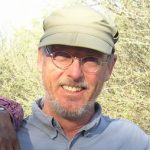 Scott Simpson is professor of anatomy at the Case Western Reserve University school of medicine. Scott W. Simpson’s research focus is on better understanding the nature and context of human evolution. Since 1992, he has been conducting field research in the Afar Region of Ethiopia, first with the Middle Awash and Gona research teams and now as project leader of the Galili project. He has published on the paleobiology of a number of ancient hominins, including Ardipithecus kadabba, Ar. ramidus, Australopithecus afarensis, Au. garhi, Homo erectus, and modern humans. Professor Simpson teaches human anatomy to medical and graduate students. He received his BA from the University of New Hampshire and his MA and PhD from Kent State University. Contact: scott.simpson@case.edu 216.368.1946.
Scott Simpson is professor of anatomy at the Case Western Reserve University school of medicine. Scott W. Simpson’s research focus is on better understanding the nature and context of human evolution. Since 1992, he has been conducting field research in the Afar Region of Ethiopia, first with the Middle Awash and Gona research teams and now as project leader of the Galili project. He has published on the paleobiology of a number of ancient hominins, including Ardipithecus kadabba, Ar. ramidus, Australopithecus afarensis, Au. garhi, Homo erectus, and modern humans. Professor Simpson teaches human anatomy to medical and graduate students. He received his BA from the University of New Hampshire and his MA and PhD from Kent State University. Contact: scott.simpson@case.edu 216.368.1946.
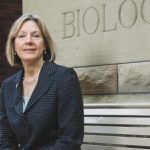 Lynn Singer is a professor of Epidemiology and Biostatistics at CWRU School of Medicine. Dr. Singer has directed a number of large, federally and privately funded research programs. These include a 19-year study of high-risk, preterm infants with lung disease and their families; a longitudinal study of cocaine-exposed infants in Cleveland from birth to 12 years; and a birth cohort study of MDMA exposure in London, England. She also directed the Cleveland site research of a multisite industry study that evaluated the effects of long-chain polyunsaturated acids (LCPUFAS) on infant development that resulted in a patent. She has edited two books, Psychosocial Assessment of Adolescents, and Biobehavioral Assessment of Infants, and authored more than 150 articles in medical and psychological literature. She currently serves as Chair of the Steering Committee for the International Center for Autism Research and Education (ICARE) at Case Western Reserve University. Website: https://www.case.edu/deputyprovost/about-lynn-t-singer/
Lynn Singer is a professor of Epidemiology and Biostatistics at CWRU School of Medicine. Dr. Singer has directed a number of large, federally and privately funded research programs. These include a 19-year study of high-risk, preterm infants with lung disease and their families; a longitudinal study of cocaine-exposed infants in Cleveland from birth to 12 years; and a birth cohort study of MDMA exposure in London, England. She also directed the Cleveland site research of a multisite industry study that evaluated the effects of long-chain polyunsaturated acids (LCPUFAS) on infant development that resulted in a patent. She has edited two books, Psychosocial Assessment of Adolescents, and Biobehavioral Assessment of Infants, and authored more than 150 articles in medical and psychological literature. She currently serves as Chair of the Steering Committee for the International Center for Autism Research and Education (ICARE) at Case Western Reserve University. Website: https://www.case.edu/deputyprovost/about-lynn-t-singer/
 Daniel Solow is a Professor in the Department of Operations Weatherhead School of Management, Case Western Reserve University. Daniel Solow has a B.S. in Mathematics from Carnegie-Mellon University; an M.S. in Operations Research from the University of California at Berkeley; and a Ph.D. in Operations Research from Stanford University. He has been a professor in the Weatherhead School of Management at Case Western Reserve University since 1978. He is an applied mathematician who uses mathematical models, analysis, and computers to provide insights regarding the evolution of biological and human systems. For example, he has built mathematical models that shed light on why life has become so specialized in the tasks needed for growth and survival. He has also developed models for studying the emergence and value of leadership in human societies and for addressing such questions as how much central control is beneficial in complex systems. Contact: daniel.solow@case.edu 216.368.3837 Website: http://faculty.weatherhead.case.edu/solow/
Daniel Solow is a Professor in the Department of Operations Weatherhead School of Management, Case Western Reserve University. Daniel Solow has a B.S. in Mathematics from Carnegie-Mellon University; an M.S. in Operations Research from the University of California at Berkeley; and a Ph.D. in Operations Research from Stanford University. He has been a professor in the Weatherhead School of Management at Case Western Reserve University since 1978. He is an applied mathematician who uses mathematical models, analysis, and computers to provide insights regarding the evolution of biological and human systems. For example, he has built mathematical models that shed light on why life has become so specialized in the tasks needed for growth and survival. He has also developed models for studying the emergence and value of leadership in human societies and for addressing such questions as how much central control is beneficial in complex systems. Contact: daniel.solow@case.edu 216.368.3837 Website: http://faculty.weatherhead.case.edu/solow/
 David Spergel is a professor in the Department of Astrophysics at Princeton University. His research interests range from the search for planets around nearby stars to the shape of the universe. Using microwave background observations from the WMAP Satellite and the Atacama Cosmology Telescope, he has measured the age, shape, and composition of the universe. These observations have played a significant role in establishing the standard model of cosmology. He is currently co-chair of the WFIRST science team. WFIRST will study the nature of dark energy, complete the demographic survey of extrasolar planets, characterize the atmospheres of nearby planets and survey the universe with more than 100x the field of view of the Hubble Space Telescope. Website: http://www.astro.princeton.edu/~dns/
David Spergel is a professor in the Department of Astrophysics at Princeton University. His research interests range from the search for planets around nearby stars to the shape of the universe. Using microwave background observations from the WMAP Satellite and the Atacama Cosmology Telescope, he has measured the age, shape, and composition of the universe. These observations have played a significant role in establishing the standard model of cosmology. He is currently co-chair of the WFIRST science team. WFIRST will study the nature of dark energy, complete the demographic survey of extrasolar planets, characterize the atmospheres of nearby planets and survey the universe with more than 100x the field of view of the Hubble Space Telescope. Website: http://www.astro.princeton.edu/~dns/
 Erkki Somersalo is a professor in the department of Mathematics, Applied Mathematics, and Statistics at Case Western Reserve University. The main research activity of Erkki Somersalo is in the field of inverse problems. In particular, he has contributed to applications in biomedical research, developing the theory and applications of imaging modalities based on interaction of material and electromagnetic waves, such as Electrical Impedance Tomography (EIT), Optical Absorption and Scattering Tomography (OAST), Magnetoencephalography (MEG), X-ray Computerized Tomography (CT), and imaging by EM wave scattering. Website: http://math.case.edu/faculty/erkki-somersalo/
Erkki Somersalo is a professor in the department of Mathematics, Applied Mathematics, and Statistics at Case Western Reserve University. The main research activity of Erkki Somersalo is in the field of inverse problems. In particular, he has contributed to applications in biomedical research, developing the theory and applications of imaging modalities based on interaction of material and electromagnetic waves, such as Electrical Impedance Tomography (EIT), Optical Absorption and Scattering Tomography (OAST), Magnetoencephalography (MEG), X-ray Computerized Tomography (CT), and imaging by EM wave scattering. Website: http://math.case.edu/faculty/erkki-somersalo/
 Linda Spurlock is an assistant Professor in the Dept. of Anthropology at Kent State University. Spurlock teaches courses in biological anthropology, forensic anthropology and archaeology.She received her Ph.D. in biomedical science from Kent State with a dissertation about reproductive suppression in the pygmy marmoset, a tiny New World Monkey. Spurlock is a forensic facial reconstruction artist and provides sketches and sculptures of unidentified persons for Coroner and Medical Examiner’s offices throughout the region. She is also a scientific illustrator who specializes in primate fossil reconstruction and has recently worked on reconstructing the fossil pelvis of Ardipithecus ramidus. In 2006 she co-edited Caves and Culture: 10,000 Years of History in Ohio, Kent State University Press. Contact: lspurloc@kent.edu 330.672.5972, Website: www.lindaspurlock.com
Linda Spurlock is an assistant Professor in the Dept. of Anthropology at Kent State University. Spurlock teaches courses in biological anthropology, forensic anthropology and archaeology.She received her Ph.D. in biomedical science from Kent State with a dissertation about reproductive suppression in the pygmy marmoset, a tiny New World Monkey. Spurlock is a forensic facial reconstruction artist and provides sketches and sculptures of unidentified persons for Coroner and Medical Examiner’s offices throughout the region. She is also a scientific illustrator who specializes in primate fossil reconstruction and has recently worked on reconstructing the fossil pelvis of Ardipithecus ramidus. In 2006 she co-edited Caves and Culture: 10,000 Years of History in Ohio, Kent State University Press. Contact: lspurloc@kent.edu 330.672.5972, Website: www.lindaspurlock.com
 Glenn Starkman is Distinguished University Professor, professor of physics and astronomy, director of the Center for Education and Research in Cosmology and Astrophysics, and director of the Institute for the Sciences of Origins at Case Western Reserve University. His research has ranged from searching for habitable planets around other stars to understanding the shape of the universe, from looking for miniature black holes in particle accelerators to extending and testing Einstein’s General Theory of Relativity. These days he spends whatever time he can with students and other colleagues debunking the Fine-Tuning problem of the Standard Model, looking for large chunks of very dense dark matter, and trying to understand the large scale properties of the universe. Contact: gds6@cwru.edu, Website: http://www.phys.cwru.edu/faculty/index.php?starkman
Glenn Starkman is Distinguished University Professor, professor of physics and astronomy, director of the Center for Education and Research in Cosmology and Astrophysics, and director of the Institute for the Sciences of Origins at Case Western Reserve University. His research has ranged from searching for habitable planets around other stars to understanding the shape of the universe, from looking for miniature black holes in particle accelerators to extending and testing Einstein’s General Theory of Relativity. These days he spends whatever time he can with students and other colleagues debunking the Fine-Tuning problem of the Standard Model, looking for large chunks of very dense dark matter, and trying to understand the large scale properties of the universe. Contact: gds6@cwru.edu, Website: http://www.phys.cwru.edu/faculty/index.php?starkman
 Nicole Steinmetz is an Associate Professor of Biomedical Engineering at the Case Western Reserve School of Medicine. The Steinmetz Lab’s mission is to push to new frontiers in medicine and bio-nanotechnology through design, development and testing of biology-inspired nanotechnologies derived from plant viruses. Their vision is the translation of promising candidates into clinical and commercial applications. Website: http://www.steinmetzlab.com/
Nicole Steinmetz is an Associate Professor of Biomedical Engineering at the Case Western Reserve School of Medicine. The Steinmetz Lab’s mission is to push to new frontiers in medicine and bio-nanotechnology through design, development and testing of biology-inspired nanotechnologies derived from plant viruses. Their vision is the translation of promising candidates into clinical and commercial applications. Website: http://www.steinmetzlab.com/
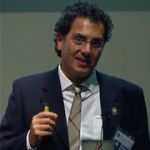 Giuseppe Strangi is a professor in the Department of Physics at Case Western Reserve University. Is group’s research primarily focuses on optical and plasmonic properties of nanostructured photonic metamaterials. The inclination toward miniaturization in the emerging generation of nanoscale materials has led to a growing interest in the physics of hybrid nanostructures to understand and exploit interactions arising by confinement, topology and dimensionality. In recent years significant strides have been made in the understanding of phenomena due to the manipulation and organization of atoms and molecules by mimicking processes and strategies adopted by Mother Nature. Currently, his lab is exploring several fascinating topics, including extreme optics to design biosensing platforms based on hyperbolic metamaterials to detect ultralow molecular weight analytes and biomarkers; Indefinite dispersion metamaterials that support virtually infinite photonic density of states (speed-up of QE spontaneous emission; perfect absorption, subwavelength imaging, etc.,), Plasmon-exciton interplay and ultrafast dinamics in hybrid nanoassemblies (Purcell effect, Loss mitigation, hot electrons), Emission, transport and coherence features in amplifying random laser systems (photon statistics, spatial and temporal coherence, spatial distribution of the emission intensity, confinement geometries);, and the electromagnetic properties of intrinsically active and tunable photonic metamaterials. Website: http://physics.case.edu/faculty/giuseppe-strangi/
Giuseppe Strangi is a professor in the Department of Physics at Case Western Reserve University. Is group’s research primarily focuses on optical and plasmonic properties of nanostructured photonic metamaterials. The inclination toward miniaturization in the emerging generation of nanoscale materials has led to a growing interest in the physics of hybrid nanostructures to understand and exploit interactions arising by confinement, topology and dimensionality. In recent years significant strides have been made in the understanding of phenomena due to the manipulation and organization of atoms and molecules by mimicking processes and strategies adopted by Mother Nature. Currently, his lab is exploring several fascinating topics, including extreme optics to design biosensing platforms based on hyperbolic metamaterials to detect ultralow molecular weight analytes and biomarkers; Indefinite dispersion metamaterials that support virtually infinite photonic density of states (speed-up of QE spontaneous emission; perfect absorption, subwavelength imaging, etc.,), Plasmon-exciton interplay and ultrafast dinamics in hybrid nanoassemblies (Purcell effect, Loss mitigation, hot electrons), Emission, transport and coherence features in amplifying random laser systems (photon statistics, spatial and temporal coherence, spatial distribution of the emission intensity, confinement geometries);, and the electromagnetic properties of intrinsically active and tunable photonic metamaterials. Website: http://physics.case.edu/faculty/giuseppe-strangi/
 Kingman P. Strohl, MD, is the program director of sleep medicine at the University Hospitals Cleveland Medical Center. Kingman Strohl is a professor of Medicine, physiology & biophysics and oncology and director of the Center for sleep Disorders Research at the Louis Stokes Cleveland DVA Medical Center. He has research interests in sleep, the control of breathing during sleep, hypoxia, and clinical disorders of sleep including sleep apnea, narcolepsy, and insomnia. He has interests in how sleep affects the functions of society and vice versa. Website: http://www.uhhospitals.org/find-a-doctor/strohl-kingman-1335
Kingman P. Strohl, MD, is the program director of sleep medicine at the University Hospitals Cleveland Medical Center. Kingman Strohl is a professor of Medicine, physiology & biophysics and oncology and director of the Center for sleep Disorders Research at the Louis Stokes Cleveland DVA Medical Center. He has research interests in sleep, the control of breathing during sleep, hypoxia, and clinical disorders of sleep including sleep apnea, narcolepsy, and insomnia. He has interests in how sleep affects the functions of society and vice versa. Website: http://www.uhhospitals.org/find-a-doctor/strohl-kingman-1335
 Denise Su is the curator and Head of Paleobotony and Paleoecology at the Cleveland Museum of Natural History. Dr. Denise Su is an expert in paleoecological reconstruction. Her research is revealing the environments in which our most ancient human ancestors lived and will ultimately provide insight into whether environmental factors shaped the trajectory of hominin evolution. Su is presently scouting Ethiopia for rock exposures that are between 5 million and 10 million years old. She aims to find an African site that will provide clues to what the environment was like prior to when hominins diverged from their common ancestor with the other primates. Website: https://www.cmnh.org/su
Denise Su is the curator and Head of Paleobotony and Paleoecology at the Cleveland Museum of Natural History. Dr. Denise Su is an expert in paleoecological reconstruction. Her research is revealing the environments in which our most ancient human ancestors lived and will ultimately provide insight into whether environmental factors shaped the trajectory of hominin evolution. Su is presently scouting Ethiopia for rock exposures that are between 5 million and 10 million years old. She aims to find an African site that will provide clues to what the environment was like prior to when hominins diverged from their common ancestor with the other primates. Website: https://www.cmnh.org/su
 Gavin Svenson is Curator and Head of Invertebrate Zoology at the Cleveland Museum of Natural History. Dr. Gavin Svenson is an entomologist with expertise in the biological diversity and evolutionary history of praying mantises. The results of his research are changing the traditional scientific classification of these insects and revealing new evolutionary patterns among them. Svenson became intrigued with understanding insect evolution during a college study-abroad program in Australia. He began working with praying mantises, long one of his favorite insects, and their systematics (scientific classification) as a graduate student. Svenson was named a Museum curator in 2012. He employs modern morphological and molecular-based approaches for his research. Using the Museum’s DNA lab, he isolates DNA sequence information from specimens and, using computer analysis, generates the likeliest scenario for their positions within the praying mantis family tree. The end result is a reorganized classification of praying mantis species that aligns genetics with morphology. Website: https://www.cmnh.org/svenson
Gavin Svenson is Curator and Head of Invertebrate Zoology at the Cleveland Museum of Natural History. Dr. Gavin Svenson is an entomologist with expertise in the biological diversity and evolutionary history of praying mantises. The results of his research are changing the traditional scientific classification of these insects and revealing new evolutionary patterns among them. Svenson became intrigued with understanding insect evolution during a college study-abroad program in Australia. He began working with praying mantises, long one of his favorite insects, and their systematics (scientific classification) as a graduate student. Svenson was named a Museum curator in 2012. He employs modern morphological and molecular-based approaches for his research. Using the Museum’s DNA lab, he isolates DNA sequence information from specimens and, using computer analysis, generates the likeliest scenario for their positions within the praying mantis family tree. The end result is a reorganized classification of praying mantis species that aligns genetics with morphology. Website: https://www.cmnh.org/svenson
 Cyrus C. Taylor is the Albert A. Michelson Professor of Physics and Dean of the College of Arts and Sciences at Case Western Reserve University. He is the author of more than 60 scientific papers and has given more than 70 invited talks in recent years. As a physicist, he has worked in both theoretical and experimental high energy physics, serving as co-spokesman of the MiniMax collaboration (FNAL T-864) at Fermilab (1993 – present) and as co-spokesman of the FELIX collaboration at CERN (1996-present). Prof. Taylor has also been a leader in creating new programs aimed at empowering scientists as entrepreneurs. He is Director of the Physics Entrepreneurship Program at Case Western Reserve University, Coordinator of Case’s Science Entrepreneurship Programs and Co-Director of InTICE, the Institute for Technology Innovation, Commercialization and Entrepreneurship. Prof. Taylor was named a Fellow of the American Physical Society for providing a new paradigm for graduate education in Physics through the creation of an innovative Physics Entrepreneurship Master’s Program, and was awarded the prestigious 2003 Price Institute Innovative Entrepreneurship Educators Award for pioneering the innovative Physics Entrepreneurship Program. Contact: cyrus.taylor@case.edu 216.368.4437 Website: http://artsci.case.edu/about-the-college/about-the-dean/
Cyrus C. Taylor is the Albert A. Michelson Professor of Physics and Dean of the College of Arts and Sciences at Case Western Reserve University. He is the author of more than 60 scientific papers and has given more than 70 invited talks in recent years. As a physicist, he has worked in both theoretical and experimental high energy physics, serving as co-spokesman of the MiniMax collaboration (FNAL T-864) at Fermilab (1993 – present) and as co-spokesman of the FELIX collaboration at CERN (1996-present). Prof. Taylor has also been a leader in creating new programs aimed at empowering scientists as entrepreneurs. He is Director of the Physics Entrepreneurship Program at Case Western Reserve University, Coordinator of Case’s Science Entrepreneurship Programs and Co-Director of InTICE, the Institute for Technology Innovation, Commercialization and Entrepreneurship. Prof. Taylor was named a Fellow of the American Physical Society for providing a new paradigm for graduate education in Physics through the creation of an innovative Physics Entrepreneurship Master’s Program, and was awarded the prestigious 2003 Price Institute Innovative Entrepreneurship Educators Award for pioneering the innovative Physics Entrepreneurship Program. Contact: cyrus.taylor@case.edu 216.368.4437 Website: http://artsci.case.edu/about-the-college/about-the-dean/
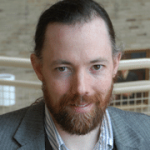 Peter Thomas is an associate professor in the Department of Mathematics, Applied Mathematics, and Statistics at Case Western Reserve University. He studies principles of communication and control in complex adaptive biological systems. He studied philosophy and physics at Yale, taught physics and chemistry to high school students in the first years of the Teach for America program, moved to the University of Chicago to study in the Conceptual Foundations of Science program, and completed a PhD in mathematics (2000). His thesis work, directed by Jack Cowan, explored spontaneous symmetry breaking in statistical mechanics models of the mammalian visual cortex. As a postdoctoral student with Terrence Sejnowski at the Salk Institute, he became interested in information theory as a framework for understanding fundamental limits in cellular-level signaling networks. After teaching in the mathematics and neuroscience programs at Oberlin College, Peter moved to Case Western Reserve University in 2006. His current projects include redefining the notion of “asymptotic phase” for stochastic oscillators, studying the effects of randomly gated ion channel “noise” on patterns of activity in nerve cells, understanding principles of control in evolved motor systems, and finding the Shannon capacities for communications channels arising in cell biology. He teaches courses in probability, differential equations, computational neuroscience, and stochastic biological modeling. Contact: pjthomas@case.edu 216.368.3623 Website: http://www.case.edu/math/thomas/
Peter Thomas is an associate professor in the Department of Mathematics, Applied Mathematics, and Statistics at Case Western Reserve University. He studies principles of communication and control in complex adaptive biological systems. He studied philosophy and physics at Yale, taught physics and chemistry to high school students in the first years of the Teach for America program, moved to the University of Chicago to study in the Conceptual Foundations of Science program, and completed a PhD in mathematics (2000). His thesis work, directed by Jack Cowan, explored spontaneous symmetry breaking in statistical mechanics models of the mammalian visual cortex. As a postdoctoral student with Terrence Sejnowski at the Salk Institute, he became interested in information theory as a framework for understanding fundamental limits in cellular-level signaling networks. After teaching in the mathematics and neuroscience programs at Oberlin College, Peter moved to Case Western Reserve University in 2006. His current projects include redefining the notion of “asymptotic phase” for stochastic oscillators, studying the effects of randomly gated ion channel “noise” on patterns of activity in nerve cells, understanding principles of control in evolved motor systems, and finding the Shannon capacities for communications channels arising in cell biology. He teaches courses in probability, differential equations, computational neuroscience, and stochastic biological modeling. Contact: pjthomas@case.edu 216.368.3623 Website: http://www.case.edu/math/thomas/
 Andrew Tolley is an associate professor in Theoretical Physics in the Theory group at Imperial College, London. He is a theoretical cosmologist with interests in a wide range of topics, including: Developing models of the Early Universe, Inflation, Non-Gaussianities and Initial Conditions, Braneworlds and extra dimensions. More recently, his research has focused on explanations of the late time acceleration of the Universe, through developing models of Dark Energy, and Modified Gravity, and addressing some of the challenges posed by the Cosmological Constant Problem. Website: https://www.imperial.ac.uk/people/a.tolley
Andrew Tolley is an associate professor in Theoretical Physics in the Theory group at Imperial College, London. He is a theoretical cosmologist with interests in a wide range of topics, including: Developing models of the Early Universe, Inflation, Non-Gaussianities and Initial Conditions, Braneworlds and extra dimensions. More recently, his research has focused on explanations of the late time acceleration of the Universe, through developing models of Dark Energy, and Modified Gravity, and addressing some of the challenges posed by the Cosmological Constant Problem. Website: https://www.imperial.ac.uk/people/a.tolley
 Blanton Tolbert is an associate Professor in the Department of Chemistry at Case Western Reserve University. Research in the Tolbert group endeavors to understand the molecular mechanisms RNA viruses use to express their genomes. Nuclear magnetic resonance (NMR) spectroscopy and other solution biophysical methods are used to determine 3D structures and physiochemical properties of viral RNA regulatory elements both free and bound to their cognate host proteins. The research in the group is highly interdisciplinary where trainees have the opportunity to gain experience in biophysical chemistry, molecular biology, computational biology, and virology. Our primary focus is to better understand how the human immunodeficiency virus (HIV), the etiological agent of AIDS, regulates RNA processing events. Towards that end, we determined the first high-resolution structure of a key HIV regulatory RNA, the Exon Splicing Silencer 3 (ESS3), and elucidated its thermodynamic binding profile to the human protein hnRNP A1. Other projects include determining the molecular mechanisms of transcriptional control of HIV latency and translational control of Enterovirus 71 (EV71), the etiological agent of Hand, Foot, and Mouth Disease. Website: http://chemistry.case.edu/faculty/blanton-tolbert/
Blanton Tolbert is an associate Professor in the Department of Chemistry at Case Western Reserve University. Research in the Tolbert group endeavors to understand the molecular mechanisms RNA viruses use to express their genomes. Nuclear magnetic resonance (NMR) spectroscopy and other solution biophysical methods are used to determine 3D structures and physiochemical properties of viral RNA regulatory elements both free and bound to their cognate host proteins. The research in the group is highly interdisciplinary where trainees have the opportunity to gain experience in biophysical chemistry, molecular biology, computational biology, and virology. Our primary focus is to better understand how the human immunodeficiency virus (HIV), the etiological agent of AIDS, regulates RNA processing events. Towards that end, we determined the first high-resolution structure of a key HIV regulatory RNA, the Exon Splicing Silencer 3 (ESS3), and elucidated its thermodynamic binding profile to the human protein hnRNP A1. Other projects include determining the molecular mechanisms of transcriptional control of HIV latency and translational control of Enterovirus 71 (EV71), the etiological agent of Hand, Foot, and Mouth Disease. Website: http://chemistry.case.edu/faculty/blanton-tolbert/

Nandini Trivedi is Professor in the Department of Physics at the Ohio State University. Her research focusses on quantum matter. The big questions that drive her field are the emergence of new phases of matter, new ways in which electrons, atoms and spins organize themselves, and the phase transitions between these phases. One such phase is a superconductor in which a metal can lose all resistance below a certain transition temperature. This occurs because of a novel organization in which two electrons with opposite spin pair up and all the pairs move coherently, described by a single wave function. Trivedi’s research addresses the question of whether an insulator with no Fermi surface can become a superconductor, taking her research outside the standard paradigm. More recently, she is investigating quantum spin liquids, materials in which magnetic moments do not order even at the lowest temperatures due to frustration produced by either the lattice geometry or interactions. Such states harbor fractionalized excitations and could be important for storing information not in classical bits but in entangled quantum-bits, or qubits, that are resistant to decoherence by the environment. Learn more about the superconductor-insulator transition, magnetism in transition metal oxides and chalcogenides, and, topological materials on her website http://trivediresearch.org.ohio-state.edu/
 Mark Turner is an Institute Professor and Professor of Cognitive Science at Case Western Reserve University. Mark Turner is the founding director of the Cognitive Science Network. His most recent book publication is an edited volume, The Artful Mind: Cognitive Science and the Riddle of Human Creativity, from Oxford University Press. His other books and articles include Cognitive Dimensions of Social Science: The Way We Think about Politics, Economics, Law, and Society (Oxford), The Literary Mind: The Origins of Thought and Language (Oxford), Reading Minds: The Study of English in the Age of Cognitive Science (Princeton), and Death is the Mother of Beauty (Chicago). He has been a fellow of the Institute for Advanced Study, the John Simon Guggenheim Memorial Foundation, the Center for Advanced Study in the Behavioral Sciences, the National Humanities Center, the National Endowment for the Humanities, and the Institute of Advanced Study of Durham University. He is external research professor at the Krasnow Institute for Advanced Study in Cognitive Neuroscience and distinguished fellow at the New England Institute for Cognitive Science and Evolutionary Psychology. In 1996, the Académie française awarded him the Prix du Rayonnement de la langue et de la littérature françaises, Contact: turner@case.edu Website: http://markturner.org/
Mark Turner is an Institute Professor and Professor of Cognitive Science at Case Western Reserve University. Mark Turner is the founding director of the Cognitive Science Network. His most recent book publication is an edited volume, The Artful Mind: Cognitive Science and the Riddle of Human Creativity, from Oxford University Press. His other books and articles include Cognitive Dimensions of Social Science: The Way We Think about Politics, Economics, Law, and Society (Oxford), The Literary Mind: The Origins of Thought and Language (Oxford), Reading Minds: The Study of English in the Age of Cognitive Science (Princeton), and Death is the Mother of Beauty (Chicago). He has been a fellow of the Institute for Advanced Study, the John Simon Guggenheim Memorial Foundation, the Center for Advanced Study in the Behavioral Sciences, the National Humanities Center, the National Endowment for the Humanities, and the Institute of Advanced Study of Durham University. He is external research professor at the Krasnow Institute for Advanced Study in Cognitive Neuroscience and distinguished fellow at the New England Institute for Cognitive Science and Evolutionary Psychology. In 1996, the Académie française awarded him the Prix du Rayonnement de la langue et de la littérature françaises, Contact: turner@case.edu Website: http://markturner.org/
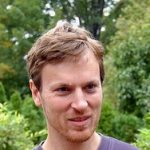 Jim Van Orman is an Associate Professor of Geochemistry and Mineral Physics at Case Western Reserve University. An alumnus of Florida State University (BS) and MIT (PhD), Jim Van Orman did his postdoctoral work at the Carnegie Institution of Washington before coming to Case Western Reserve. His research extends from studies of Earth’s core and mantle, to atomic transport in solids and liquids at high pressures and temperatures, to unraveling the history of the early Solar System recorded in meteorites. In 2005 he was awarded the F.W. Clarke Medal by the Geochemical Society in recognition of his experimental and theoretical contributions to our understanding of diffusion in the deep Earth and its consequences for trace-element geochemistry and rheological behavior. Contact: james.vanorman@case.edu 216.368.3765 Website: http://geology.case.edu/~vanorman/research.html
Jim Van Orman is an Associate Professor of Geochemistry and Mineral Physics at Case Western Reserve University. An alumnus of Florida State University (BS) and MIT (PhD), Jim Van Orman did his postdoctoral work at the Carnegie Institution of Washington before coming to Case Western Reserve. His research extends from studies of Earth’s core and mantle, to atomic transport in solids and liquids at high pressures and temperatures, to unraveling the history of the early Solar System recorded in meteorites. In 2005 he was awarded the F.W. Clarke Medal by the Geochemical Society in recognition of his experimental and theoretical contributions to our understanding of diffusion in the deep Earth and its consequences for trace-element geochemistry and rheological behavior. Contact: james.vanorman@case.edu 216.368.3765 Website: http://geology.case.edu/~vanorman/research.html
 Saba Valadkhan is an assistant Professor in the Case Western Reserve Biochemistry Department. Research in her lab is focused on the role of long non-coding RNAs in higher eukaryotes. Large scale analyses of transcriptional output of the eukaryotic genomes have revealed the existence of a very large number of long non-coding transcripts. While the majority of them remain unstudied, current evidence suggest that the study of these mysterious transcripts is likely to provide answers to many remaining questions in biology of higher eukaryotes. Website: http://www.case.edu/med/biochemistry/faculty/valadkhan.html
Saba Valadkhan is an assistant Professor in the Case Western Reserve Biochemistry Department. Research in her lab is focused on the role of long non-coding RNAs in higher eukaryotes. Large scale analyses of transcriptional output of the eukaryotic genomes have revealed the existence of a very large number of long non-coding transcripts. While the majority of them remain unstudied, current evidence suggest that the study of these mysterious transcripts is likely to provide answers to many remaining questions in biology of higher eukaryotes. Website: http://www.case.edu/med/biochemistry/faculty/valadkhan.html
 Rajesh Viswanathan is the Frank Hovorka Assistant Professor of Chemistry at Case Western Reserve University. Basic chemical questions and applied biological problems form two facets of his lab’s scientific endeavor. Our basic science is focused on: a. biomimetic synthesis of natural products and b. understanding the mechanisms underlying biosynthesis and metabolism. Applied biological problems involve development of small-molecule based therapeutic strategies for combating antibiotic resistance and proliferative diseases such as cancer. In a collaborative setup, his group routinely employs asymmetric synthesis, genomics, mechanistic enzymology, and microbiology as tools to experimentally test bioorganic concepts. Website: http://chemistry.case.edu/faculty/rajesh-viswanathan/
Rajesh Viswanathan is the Frank Hovorka Assistant Professor of Chemistry at Case Western Reserve University. Basic chemical questions and applied biological problems form two facets of his lab’s scientific endeavor. Our basic science is focused on: a. biomimetic synthesis of natural products and b. understanding the mechanisms underlying biosynthesis and metabolism. Applied biological problems involve development of small-molecule based therapeutic strategies for combating antibiotic resistance and proliferative diseases such as cancer. In a collaborative setup, his group routinely employs asymmetric synthesis, genomics, mechanistic enzymology, and microbiology as tools to experimentally test bioorganic concepts. Website: http://chemistry.case.edu/faculty/rajesh-viswanathan/
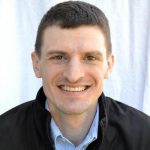 Major Jameson Voss is an active duty flight surgeon and board certified preventive medicine physician currently assigned to the US Air Force School of Aerospace Medicine. He is a member of the Associate Faculty, USAF School of Aerospace Medicine, an Adjunct Assistant Professor, Uniformed Services University of the Health Sciences, and an Adjunct Assistant Professor, Wright State University. He received his medical doctorate and masters of public health from the Uniformed Services University of the Health Sciences in Bethesda, Maryland. Dr. Voss is interested in the purposeful selection of beneficial microbes, which he calls pawnobes to connote the strategic manipulation of pawns in the game of chess. Further, he wants to understand how artificial selection alters host microbe interactions for selected and unselected hosts. All opinions are his own and not those of the Air Force, DoD, or US government. Website: www.jamesonvoss.com
Major Jameson Voss is an active duty flight surgeon and board certified preventive medicine physician currently assigned to the US Air Force School of Aerospace Medicine. He is a member of the Associate Faculty, USAF School of Aerospace Medicine, an Adjunct Assistant Professor, Uniformed Services University of the Health Sciences, and an Adjunct Assistant Professor, Wright State University. He received his medical doctorate and masters of public health from the Uniformed Services University of the Health Sciences in Bethesda, Maryland. Dr. Voss is interested in the purposeful selection of beneficial microbes, which he calls pawnobes to connote the strategic manipulation of pawns in the game of chess. Further, he wants to understand how artificial selection alters host microbe interactions for selected and unselected hosts. All opinions are his own and not those of the Air Force, DoD, or US government. Website: www.jamesonvoss.com
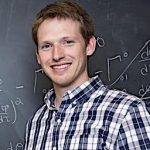 Leslie Wade is an Assistant Professor of Physics at Kenyon College. Leslie is a member of the LIGO (Laser Interferometer Gravitational-wave Observatory) Scientific Collaboration, which is one of the leading efforts to make direct gravitational-wave observations. His research includes searching for gravitational waves from binary systems and subsequently decoding the information carried in these waves. In particular, he has worked on estimating the source parameters of binary neutron-star systems in an effort to determine the neutron-star equation of state. Upgraded ground-based interferometric gravitational-wave detectors will begin operations within the year. This advanced detector era is widely anticipated to bring the first gravitational-wave detections, most likely from collisions of compact astrophysical objects including black holes and neutron stars. Encoded within these waves will be information about their source that might otherwise have remained a mystery Website: http://www.kenyon.edu/directories/campus-directory/biography/leslie-wade/
Leslie Wade is an Assistant Professor of Physics at Kenyon College. Leslie is a member of the LIGO (Laser Interferometer Gravitational-wave Observatory) Scientific Collaboration, which is one of the leading efforts to make direct gravitational-wave observations. His research includes searching for gravitational waves from binary systems and subsequently decoding the information carried in these waves. In particular, he has worked on estimating the source parameters of binary neutron-star systems in an effort to determine the neutron-star equation of state. Upgraded ground-based interferometric gravitational-wave detectors will begin operations within the year. This advanced detector era is widely anticipated to bring the first gravitational-wave detections, most likely from collisions of compact astrophysical objects including black holes and neutron stars. Encoded within these waves will be information about their source that might otherwise have remained a mystery Website: http://www.kenyon.edu/directories/campus-directory/biography/leslie-wade/
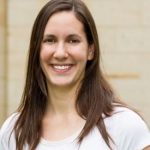 Madeline Wade is an assistant Professor of Physics at Kenyon College, and a member of the LIGO Scientific Collaboration, working as a data analyst on the experiment. She works on both calibration of the LIGO interferometers and searches for gravitational waves from the inspiral and merger of two massive, compact objects, such as neutron stars and black holes. Einstein’s theory of general relativity predicts ripples in the fabric of spacetime caused by the motion of masses across spacetime. These ripples, known as gravitational waves, have an observable effect on the spacetime in which we live. Gravitational waves stretch and compress spacetime by incredibly small amounts. The Laser Interferometer Gravitational-wave Observatory (LIGO) seeks to detect these minuscule changes in spacetime caused by gravitational waves using a kilometer-sized (souped-up) Michelson interferometer. The first direct detection of gravitational waves from a binary black hole merger 1.3 billion years ago occurred on September 14, 2015. This monumental discovery was also the first direct observation of a binary black hole merger. Maddie was fortunate enough to be part of this historical moment in science! Website: http://www.kenyon.edu/directories/campus-directory/biography/madeline-wade/
Madeline Wade is an assistant Professor of Physics at Kenyon College, and a member of the LIGO Scientific Collaboration, working as a data analyst on the experiment. She works on both calibration of the LIGO interferometers and searches for gravitational waves from the inspiral and merger of two massive, compact objects, such as neutron stars and black holes. Einstein’s theory of general relativity predicts ripples in the fabric of spacetime caused by the motion of masses across spacetime. These ripples, known as gravitational waves, have an observable effect on the spacetime in which we live. Gravitational waves stretch and compress spacetime by incredibly small amounts. The Laser Interferometer Gravitational-wave Observatory (LIGO) seeks to detect these minuscule changes in spacetime caused by gravitational waves using a kilometer-sized (souped-up) Michelson interferometer. The first direct detection of gravitational waves from a binary black hole merger 1.3 billion years ago occurred on September 14, 2015. This monumental discovery was also the first direct observation of a binary black hole merger. Maddie was fortunate enough to be part of this historical moment in science! Website: http://www.kenyon.edu/directories/campus-directory/biography/madeline-wade/
 Sean Watterson is Co-Owner at the Happy Dog and the Happy Dog, Euclid Tavern. He has been an early and ardent supporter of the Institute for the Science of Origins public outreach endeavors, offering up both the Happy Dog on Detroit Ave and The Happy Dog, Euclid Tavern on Euclid for ISO events and lecture series. Watterson went from the world of global finance to co-owning Happy Dog. He’s since turned the bar — known for its $5 hot dogs topped with as many tasty condiments as guests want — into a haven for music, science, and public-minded events.When he’s not selling hot dogs and beer at the Happy Dog and the Euclid Tavern, he still does anti-money laundering, counter terrorism finance training and consulting work on the side. He was rightfully named, in 2014, to Cleveland’s Most Interesting People list.
Sean Watterson is Co-Owner at the Happy Dog and the Happy Dog, Euclid Tavern. He has been an early and ardent supporter of the Institute for the Science of Origins public outreach endeavors, offering up both the Happy Dog on Detroit Ave and The Happy Dog, Euclid Tavern on Euclid for ISO events and lecture series. Watterson went from the world of global finance to co-owning Happy Dog. He’s since turned the bar — known for its $5 hot dogs topped with as many tasty condiments as guests want — into a haven for music, science, and public-minded events.When he’s not selling hot dogs and beer at the Happy Dog and the Euclid Tavern, he still does anti-money laundering, counter terrorism finance training and consulting work on the side. He was rightfully named, in 2014, to Cleveland’s Most Interesting People list.
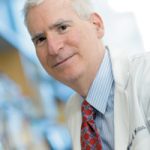 Michael Weiss born and raised in Cleveland, was chair of the Department of Biochemistry at Case Western Reserve School of Medicine from 1999-2017 and professor of medicine in the Endocrine Division. Dr. Weiss received his undergraduate degree at Harvard College and M.D. and Ph.D. degrees from the joint Harvard-MIT Program in Health Sciences and Technology. He completed a residency in internal medicine at Brigham and Women’s Hospital and began his faculty career in the Endocrine Unit of Massachusetts General Hospital. Prior to relocating to Case Western Reserve, Dr. Weiss was a professor of biochemistry and medicine at the University of Chicago. Dr. Weiss’s research promises to enhance the clinical care of patients with diabetes mellitus through the development of novel ultra-stable and receptor-isoform-specific analogs of insulin. These analogs may make feasible an implantable closed-loop insulin pump as an artificial beta cell and may enable tight glycemic control without weight gain. Dr. Weiss also is investigating the genetics of neonatal diabetes in an effort to circumvent the need for lifelong insulin therapy in this subset of patients. Contact: maw21@cwru.edu 216.368.5991 Website: http://www.case.edu/med/biochemistry/faculty/weiss.html In 2018, Dr Weiss moved to the University of Indiana, but continues as an ISO Fellow.
Michael Weiss born and raised in Cleveland, was chair of the Department of Biochemistry at Case Western Reserve School of Medicine from 1999-2017 and professor of medicine in the Endocrine Division. Dr. Weiss received his undergraduate degree at Harvard College and M.D. and Ph.D. degrees from the joint Harvard-MIT Program in Health Sciences and Technology. He completed a residency in internal medicine at Brigham and Women’s Hospital and began his faculty career in the Endocrine Unit of Massachusetts General Hospital. Prior to relocating to Case Western Reserve, Dr. Weiss was a professor of biochemistry and medicine at the University of Chicago. Dr. Weiss’s research promises to enhance the clinical care of patients with diabetes mellitus through the development of novel ultra-stable and receptor-isoform-specific analogs of insulin. These analogs may make feasible an implantable closed-loop insulin pump as an artificial beta cell and may enable tight glycemic control without weight gain. Dr. Weiss also is investigating the genetics of neonatal diabetes in an effort to circumvent the need for lifelong insulin therapy in this subset of patients. Contact: maw21@cwru.edu 216.368.5991 Website: http://www.case.edu/med/biochemistry/faculty/weiss.html In 2018, Dr Weiss moved to the University of Indiana, but continues as an ISO Fellow.
 Mark Willis is Professor in, and Chair of the Department of Biology at Case Western Reserve University. His lab studies how animals use odors to locate mates, food, etc. They have years of experience studying how flying insects orient to odors, and since his lab’s arrival at Case in 2001 they have expanded into studies of how insects orient to odors while walking. They have begun comparative studies to understand how flying and walking organisms use similar information in different behavioral and environmental contexts to perform the same odor tracking task. The animals that they use to study these questions are the Tobacco hornworm moth, Manduca sexta and the American cockroach, Periplaneta americana. When it becomes difficult to ask clean questions using animal behavior experiments, the Willis lab is also using simulation modeling and mobile robots (hardware models) to test ideas about how animals track odors through a complex environment. Additional research interests are in how the animals’ nervous systems process and use multiple types of information to generate and control their behaviors. Since Manduca sexta are large moths and superb fliers, they are able to record from their flight muscles while they are flying in order to begin to understand how the central nervous system controls flight. Website: http://biology.case.edu/faculty/mark-willis/
Mark Willis is Professor in, and Chair of the Department of Biology at Case Western Reserve University. His lab studies how animals use odors to locate mates, food, etc. They have years of experience studying how flying insects orient to odors, and since his lab’s arrival at Case in 2001 they have expanded into studies of how insects orient to odors while walking. They have begun comparative studies to understand how flying and walking organisms use similar information in different behavioral and environmental contexts to perform the same odor tracking task. The animals that they use to study these questions are the Tobacco hornworm moth, Manduca sexta and the American cockroach, Periplaneta americana. When it becomes difficult to ask clean questions using animal behavior experiments, the Willis lab is also using simulation modeling and mobile robots (hardware models) to test ideas about how animals track odors through a complex environment. Additional research interests are in how the animals’ nervous systems process and use multiple types of information to generate and control their behaviors. Since Manduca sexta are large moths and superb fliers, they are able to record from their flight muscles while they are flying in order to begin to understand how the central nervous system controls flight. Website: http://biology.case.edu/faculty/mark-willis/
 Gary E. Wnek is the Joseph F. Toot., Jr., Professor of Engineering and Professor of Macromolecular Science and Engineering at Case Western Reserve University. His interests include physiologically-mimicking macromolecular constructs with attention to motile and irritable systems as models of primitive cellular assemblies; polymers for regenerative medicine and drug delivery; synthetic polyelectrolytes as models of the cortical layer of nerve; bio-mimicking approaches to impart fire resistance to common polymers; micro- and nanofiber polymer fabrication and applications; advanced polymer films and packaging systems. Website: http://engineering.case.edu/profiles/gew5
Gary E. Wnek is the Joseph F. Toot., Jr., Professor of Engineering and Professor of Macromolecular Science and Engineering at Case Western Reserve University. His interests include physiologically-mimicking macromolecular constructs with attention to motile and irritable systems as models of primitive cellular assemblies; polymers for regenerative medicine and drug delivery; synthetic polyelectrolytes as models of the cortical layer of nerve; bio-mimicking approaches to impart fire resistance to common polymers; micro- and nanofiber polymer fabrication and applications; advanced polymer films and packaging systems. Website: http://engineering.case.edu/profiles/gew5
 Thom Yantek is an Associate Professor in Political Science at Kent State University. He received his Ph.D., from SUNY-Stony Brook in 1982. Yantek’s teaching interests include American government, mass media, business and economics. His research interests include government policies toward business, voter responses to economic policies and conditions. Website: http://www2.kent.edu/news/media/experts/~tyantek/
Thom Yantek is an Associate Professor in Political Science at Kent State University. He received his Ph.D., from SUNY-Stony Brook in 1982. Yantek’s teaching interests include American government, mass media, business and economics. His research interests include government policies toward business, voter responses to economic policies and conditions. Website: http://www2.kent.edu/news/media/experts/~tyantek/
 Youngjin Yoo is the Elizabeth M. and William C. Treuhaft Professor in Entrepreneurship and Professor of Information Systems at the department of Design & Innovation at the Weatherhead School of Management, Case Western Reserve University. He is also WBS Distinguished Research Environment Professor at Warwick Business School, UK. He was a summer research fellow at NASA in summer of 2001 and spent a year as a research associate in 2003 – 2004 at NASA Glenn Research Center. His research deals with the evolution of digital artifacts and behavioral routines, using large-scale digital trace data. He has received research grants from National Science Foundation, NASA, James S. and John L. Knight Foundation, the Department of Commerce, National Research Foundation of Korea, and Samsung Electronics. His work was published at leading academic journals such as MIS Quarterly, Information Systems Research, Organization Science, the Communications of the ACM, and the Academy of Management Journal among others. He has worked extensively with leading companies including Samsung Electronics, American Greetings, Bendix, Moen, Goodyear Tire, Gojo, Intel, Ford Motor Company, Andersen Consulting, IDEO, Gehry and Partners, University Hospitals in Cleveland, American Management Systems, Lotus, NASA, Parker Hannifin, Poly One and the Department of Housing and Urban Development.
Youngjin Yoo is the Elizabeth M. and William C. Treuhaft Professor in Entrepreneurship and Professor of Information Systems at the department of Design & Innovation at the Weatherhead School of Management, Case Western Reserve University. He is also WBS Distinguished Research Environment Professor at Warwick Business School, UK. He was a summer research fellow at NASA in summer of 2001 and spent a year as a research associate in 2003 – 2004 at NASA Glenn Research Center. His research deals with the evolution of digital artifacts and behavioral routines, using large-scale digital trace data. He has received research grants from National Science Foundation, NASA, James S. and John L. Knight Foundation, the Department of Commerce, National Research Foundation of Korea, and Samsung Electronics. His work was published at leading academic journals such as MIS Quarterly, Information Systems Research, Organization Science, the Communications of the ACM, and the Academy of Management Journal among others. He has worked extensively with leading companies including Samsung Electronics, American Greetings, Bendix, Moen, Goodyear Tire, Gojo, Intel, Ford Motor Company, Andersen Consulting, IDEO, Gehry and Partners, University Hospitals in Cleveland, American Management Systems, Lotus, NASA, Parker Hannifin, Poly One and the Department of Housing and Urban Development.
 Idit Zehavi is an assistant Professor in the department of Physics and Astronomy at Case Western Reserve University, and a member of the Center for Education and Research in Cosmology and Astrophysics at Case Western Reserve University. She received a Ph.D. in Physics from the Hebrew University of Jerusalem, Israel. She held research positions at Fermi National Accelerator Laboratory, the University of Chicago and the University of Arizona, before joining CWRU in 2006. Her research interests include cosmology and the large-scale structure of the universe, galaxy formation and evolution, and cosmic flows. She is an astrophysicist working at the interface of theory and observations, performing studies using large surveys of galaxies as well as numerical simulations. In particular, she has been focused on measuring and interpreting galaxy clustering in the Sloan Digital Sky Survey, an ambitious survey mapping a quarter of the sky. Contact: idit.zehavi at case.edu 216.368.6832 Website: http://astroweb.cwru.edu/izehavi/index.html
Idit Zehavi is an assistant Professor in the department of Physics and Astronomy at Case Western Reserve University, and a member of the Center for Education and Research in Cosmology and Astrophysics at Case Western Reserve University. She received a Ph.D. in Physics from the Hebrew University of Jerusalem, Israel. She held research positions at Fermi National Accelerator Laboratory, the University of Chicago and the University of Arizona, before joining CWRU in 2006. Her research interests include cosmology and the large-scale structure of the universe, galaxy formation and evolution, and cosmic flows. She is an astrophysicist working at the interface of theory and observations, performing studies using large surveys of galaxies as well as numerical simulations. In particular, she has been focused on measuring and interpreting galaxy clustering in the Sloan Digital Sky Survey, an ambitious survey mapping a quarter of the sky. Contact: idit.zehavi at case.edu 216.368.6832 Website: http://astroweb.cwru.edu/izehavi/index.html
 Peter Zimmerman is a Professor of Biology at Case Western Reserve University, and studies Malaria. Today at least 2.6 billion people live in areas of risk for Plasmodium vivax transmission; 106 – 313 million cases of vivax malaria annually. While Duffy blood group negativity (Duffy (-)) has been considered to confer resistance to vivax malaria, our recent findings show that P. vivax has gained the capacity to infect erythrocytes and cause disease in Duffy (-) people in Madagascar. Zimmerman’s group’s surveys of school-aged children revealed P. vivax PCR-positivity in 8.8% of asymptomatic Duffy (-) children, and they also observed mono-infection P. vivax clinical disease in 4.9% of Duffy (-) people who reported for treatment during in vivo drug efficacy surveys; blood smear diagnosis confirmed P. vivax. His lab is currently aiming to determine associations between P. vivax strains and susceptibility of Duffy (-) people to P. vivax blood-stage infection and clinical malaria, assess interactions between P. vivax erythrocyte binding ligands and human erythrocytes that influence merozoite attachment and human red cell invasion, and test alternative invasion pathways of Malagasy P. vivax strains in vitro for Duffy (-) and Duffy (+) erythrocytes. Contact: paz@case.edu 216.368.0508 https://cwru.pure.elsevier.com/en/persons/peter-a-zimmerman/projects/
Peter Zimmerman is a Professor of Biology at Case Western Reserve University, and studies Malaria. Today at least 2.6 billion people live in areas of risk for Plasmodium vivax transmission; 106 – 313 million cases of vivax malaria annually. While Duffy blood group negativity (Duffy (-)) has been considered to confer resistance to vivax malaria, our recent findings show that P. vivax has gained the capacity to infect erythrocytes and cause disease in Duffy (-) people in Madagascar. Zimmerman’s group’s surveys of school-aged children revealed P. vivax PCR-positivity in 8.8% of asymptomatic Duffy (-) children, and they also observed mono-infection P. vivax clinical disease in 4.9% of Duffy (-) people who reported for treatment during in vivo drug efficacy surveys; blood smear diagnosis confirmed P. vivax. His lab is currently aiming to determine associations between P. vivax strains and susceptibility of Duffy (-) people to P. vivax blood-stage infection and clinical malaria, assess interactions between P. vivax erythrocyte binding ligands and human erythrocytes that influence merozoite attachment and human red cell invasion, and test alternative invasion pathways of Malagasy P. vivax strains in vitro for Duffy (-) and Duffy (+) erythrocytes. Contact: paz@case.edu 216.368.0508 https://cwru.pure.elsevier.com/en/persons/peter-a-zimmerman/projects/



